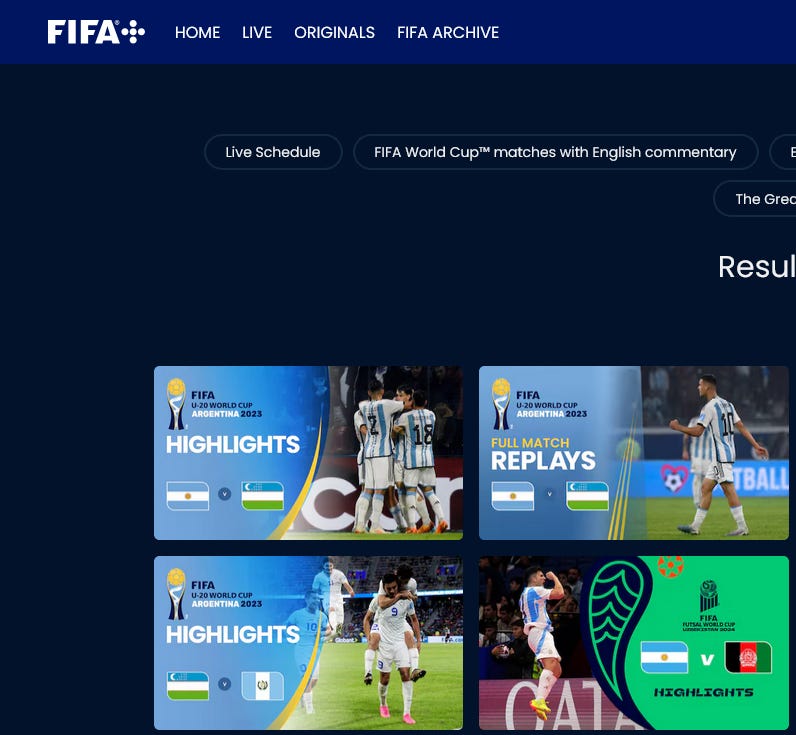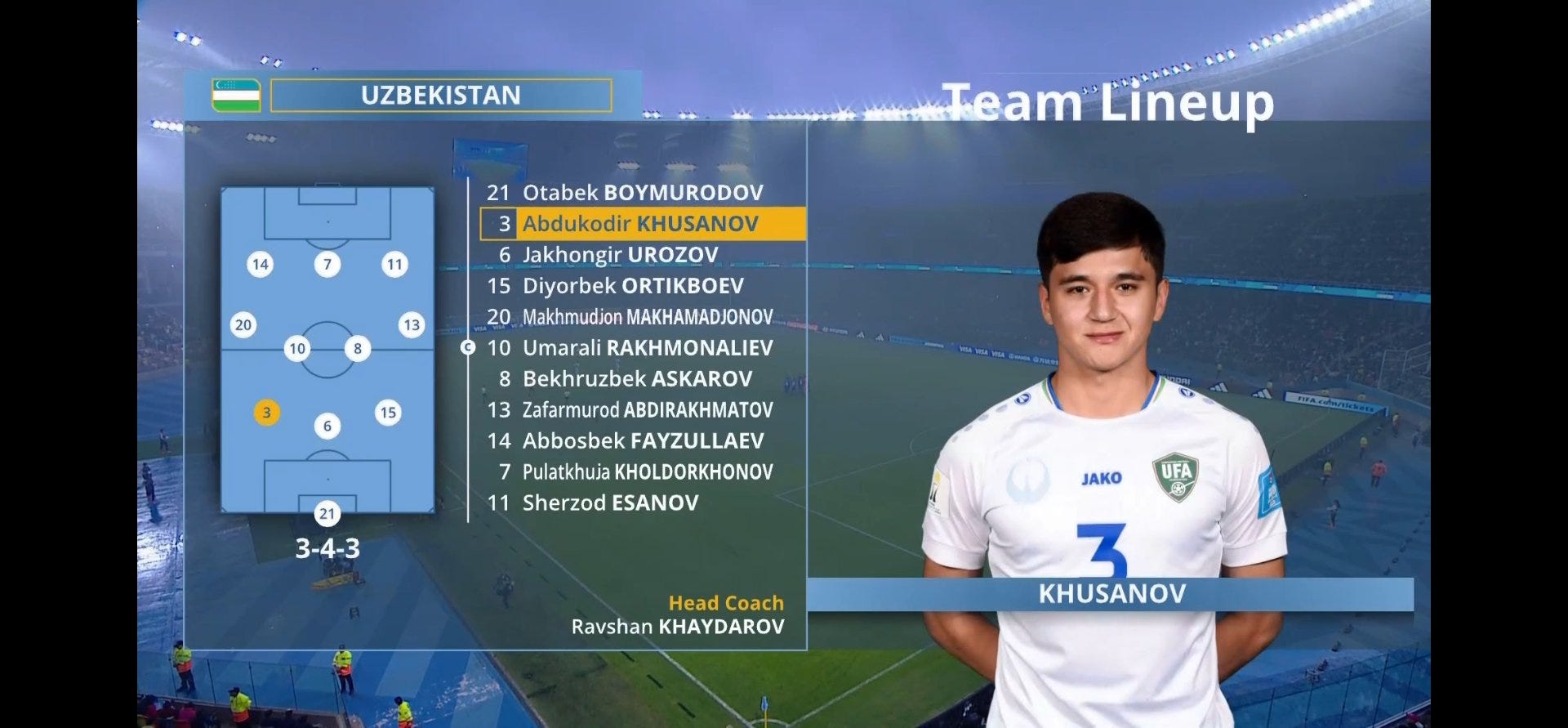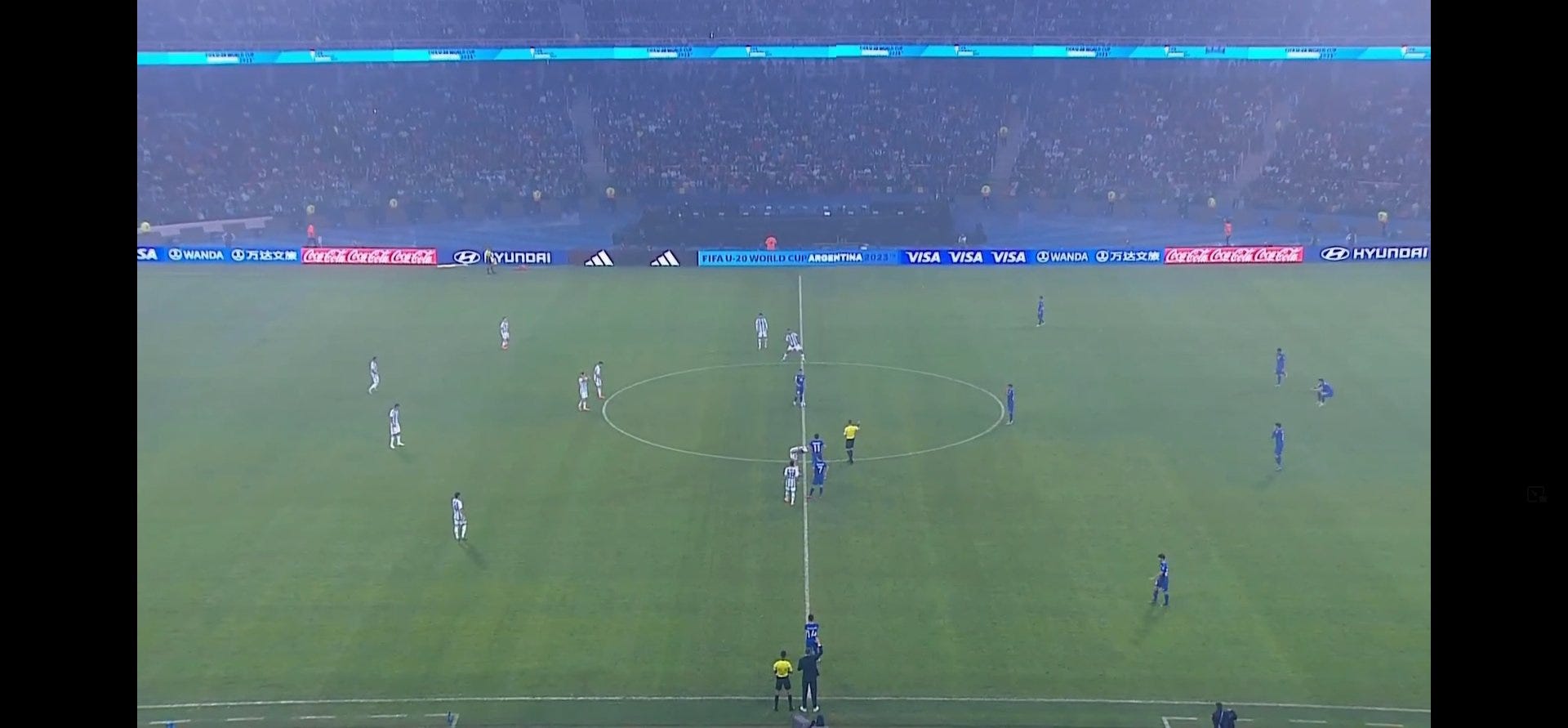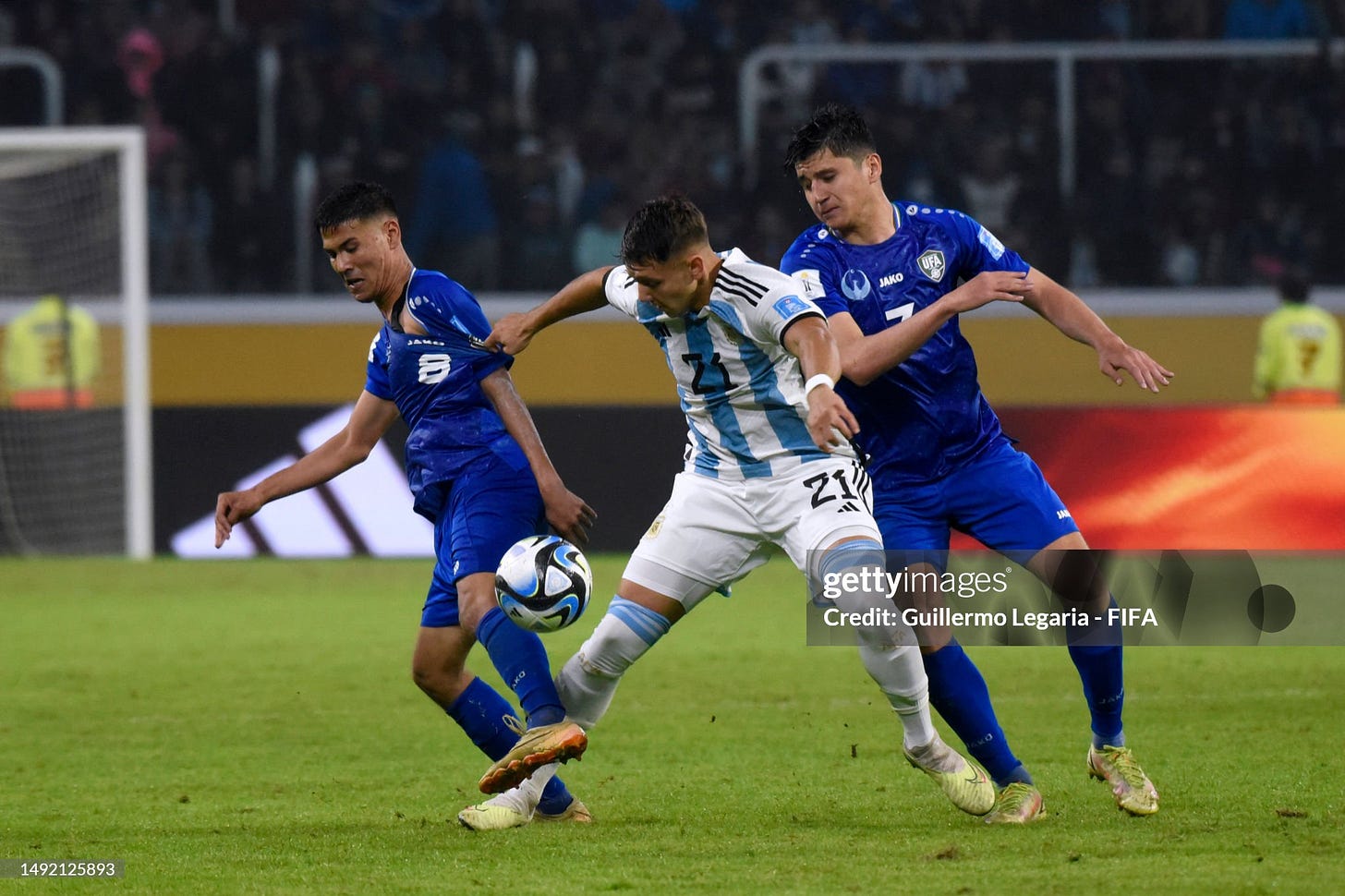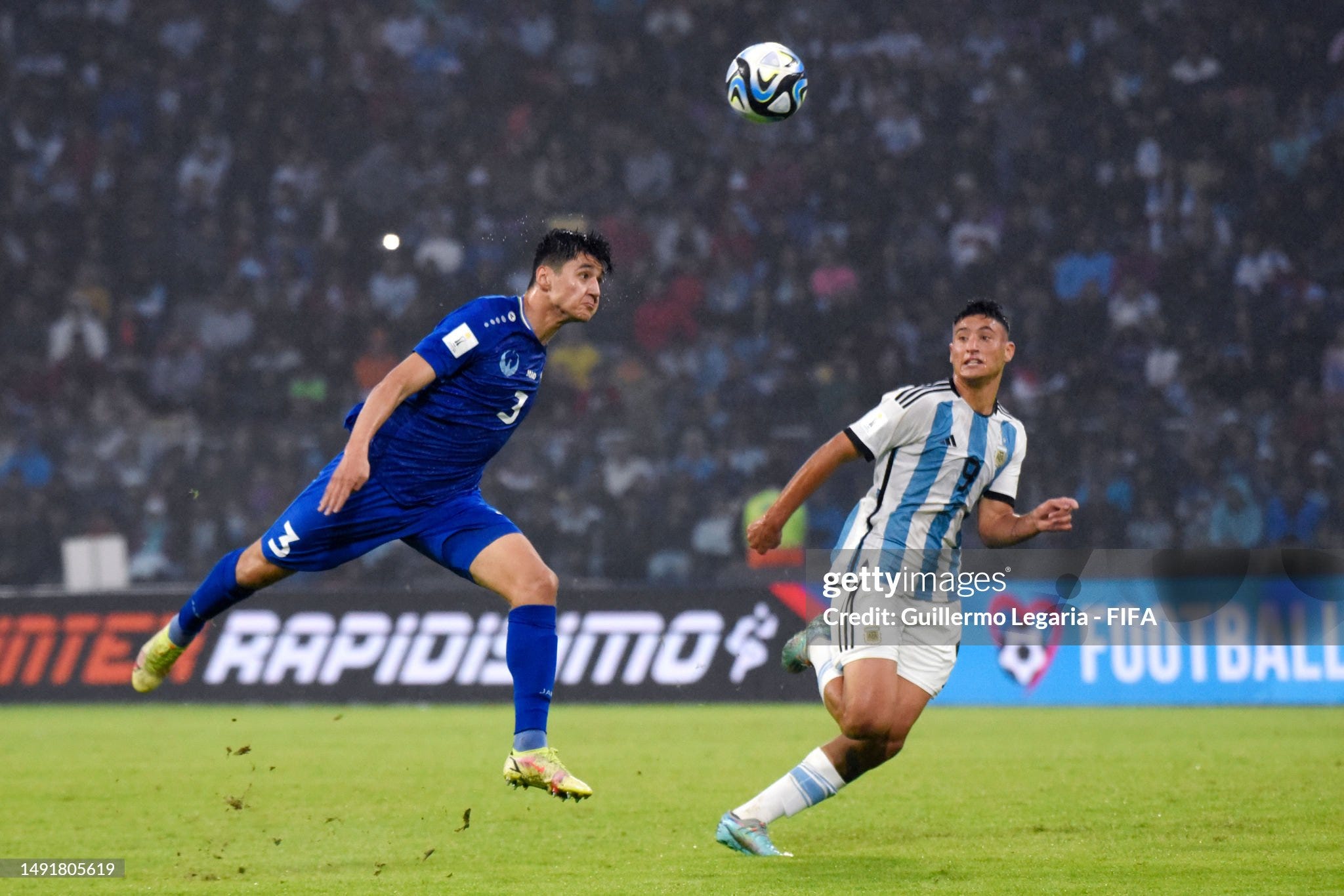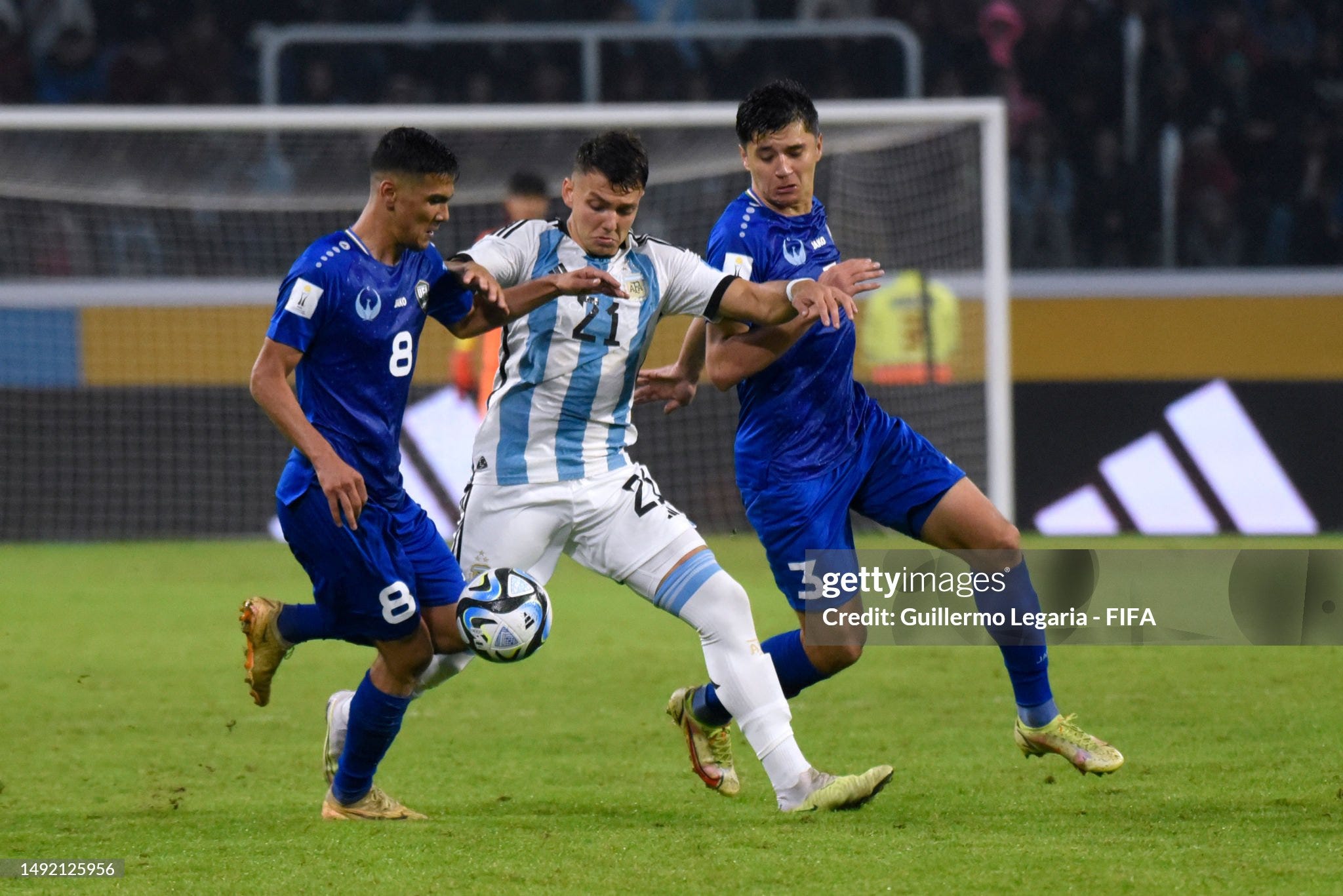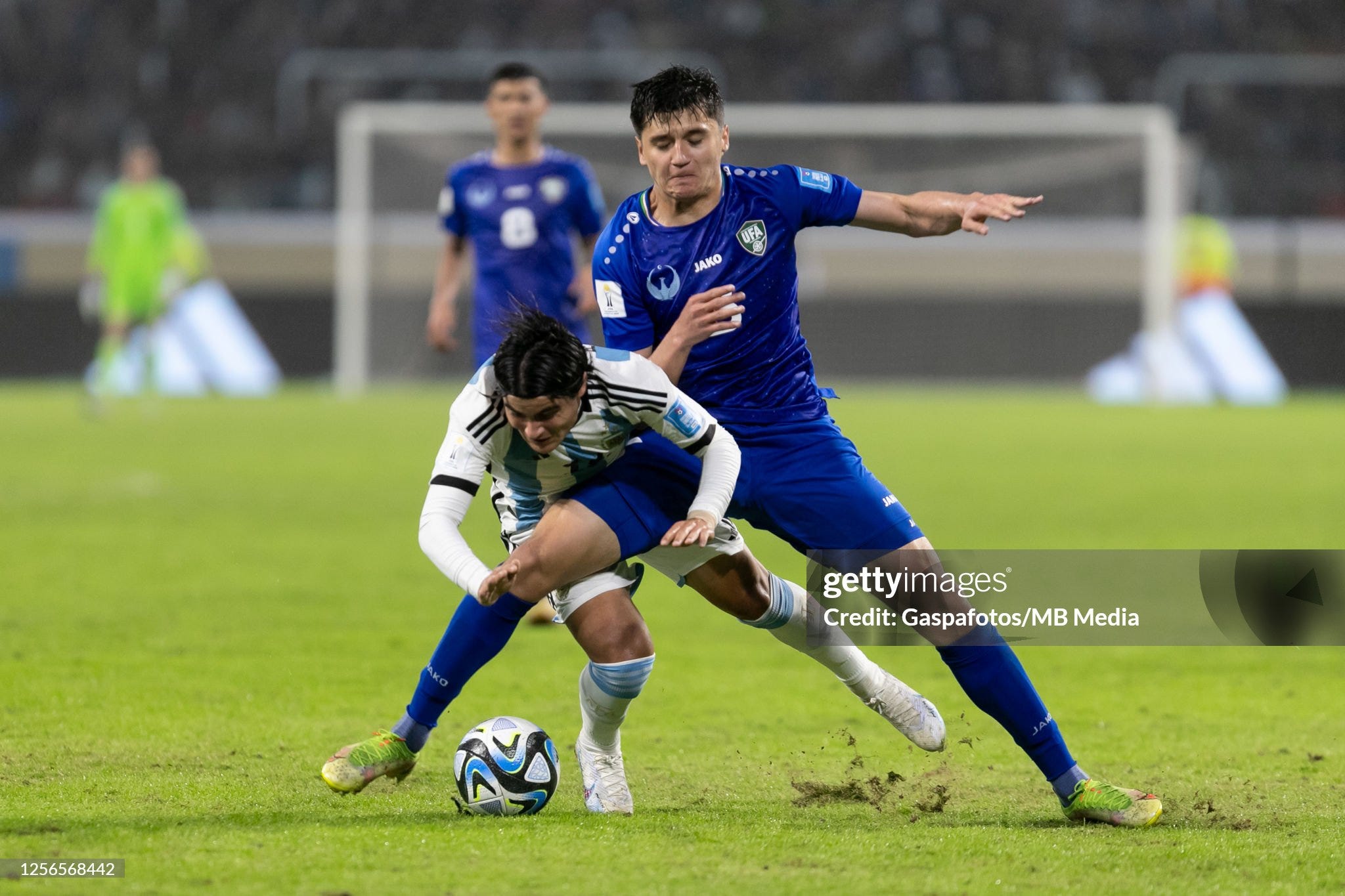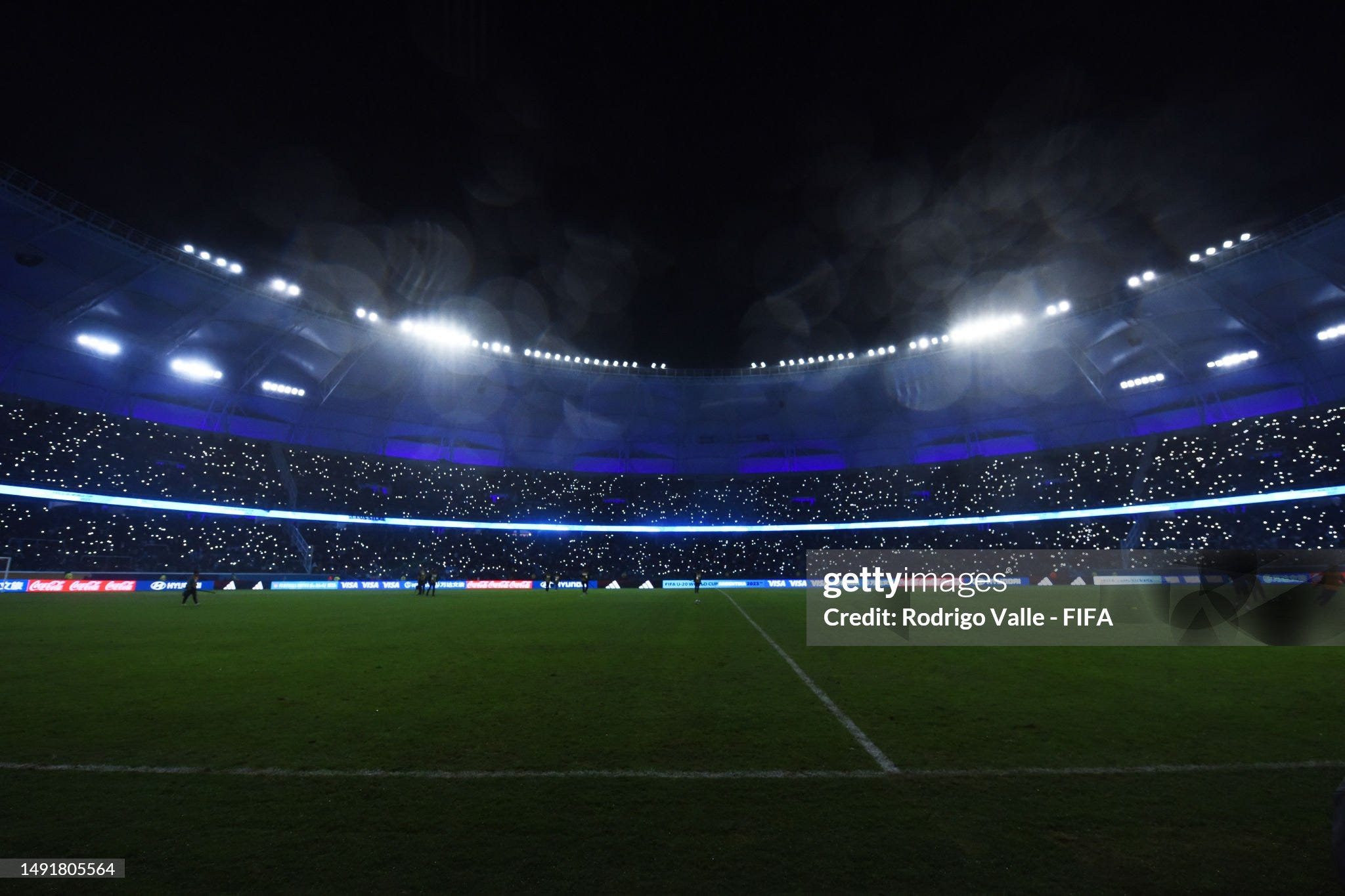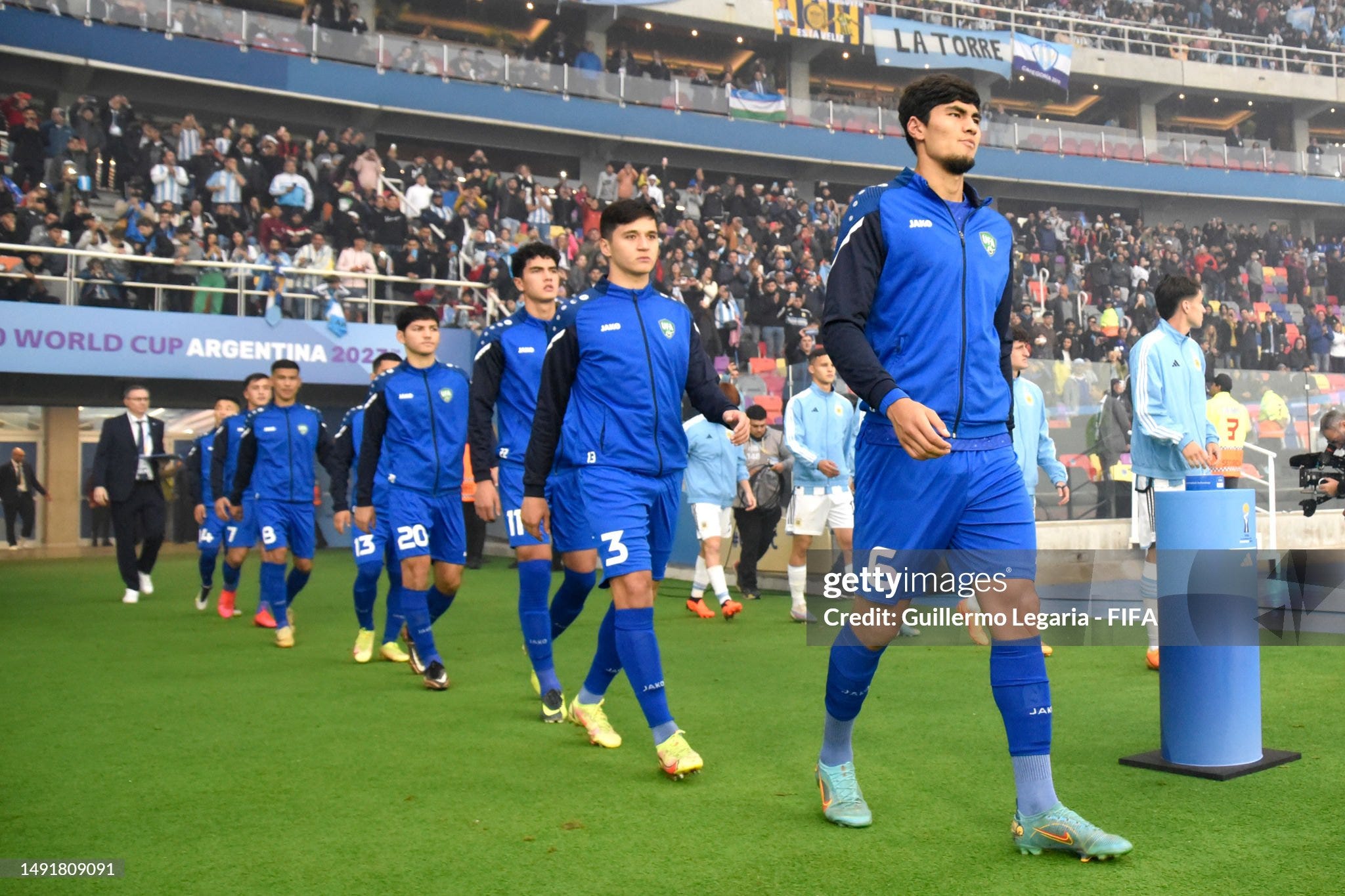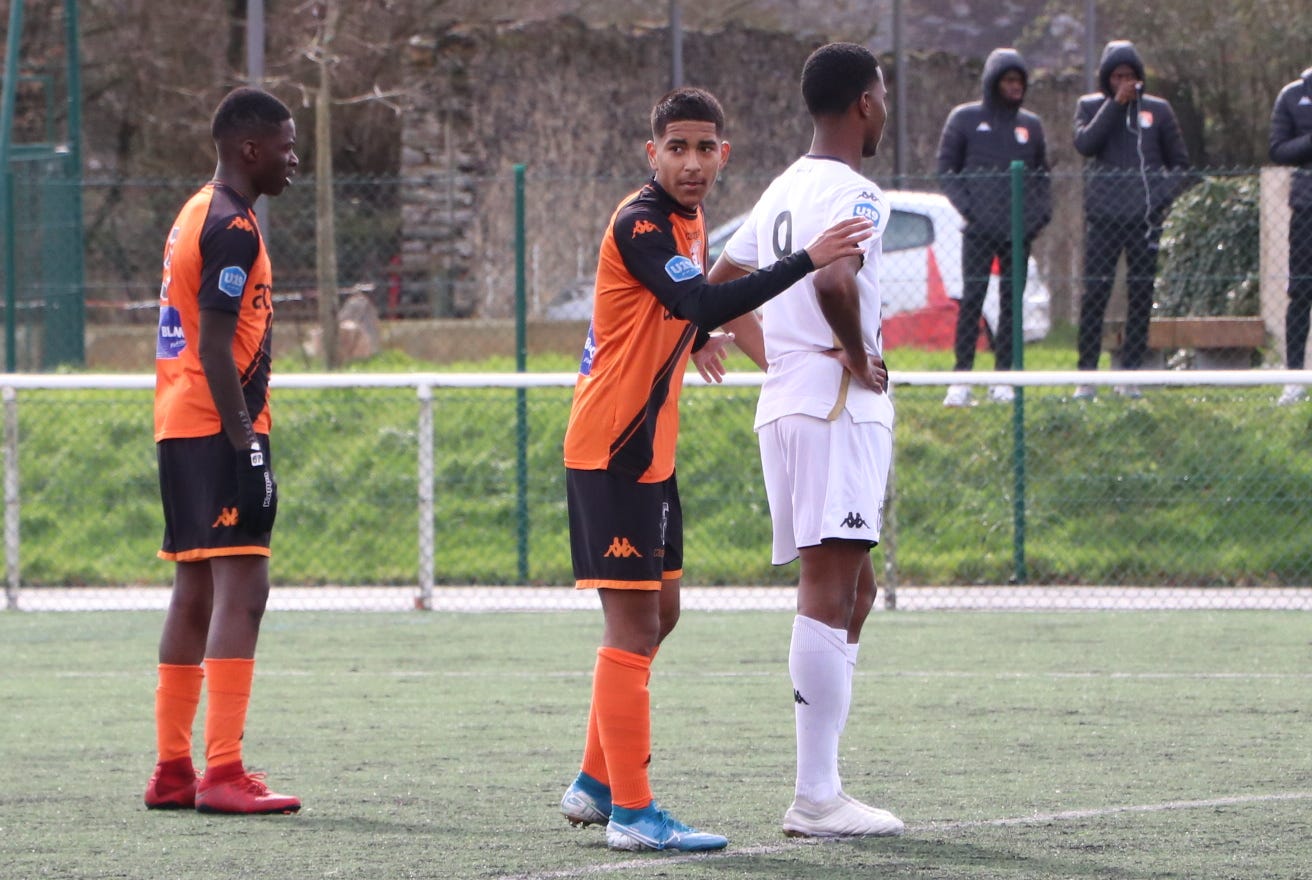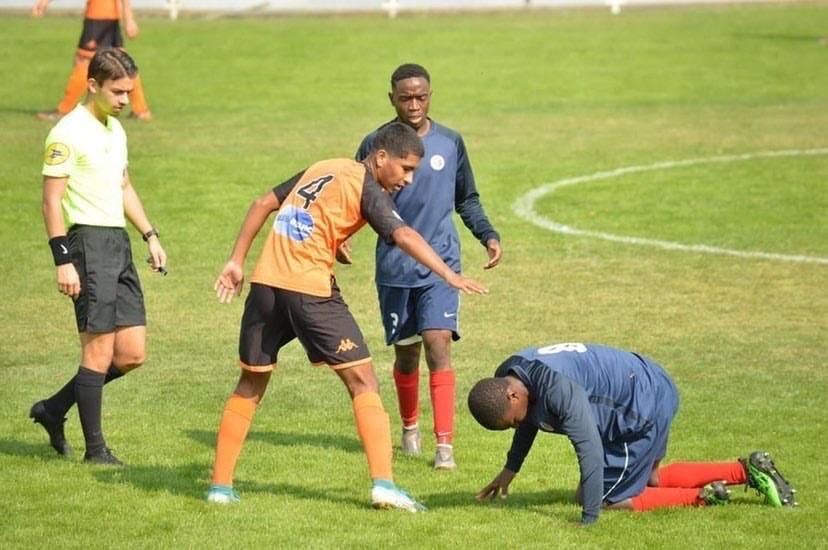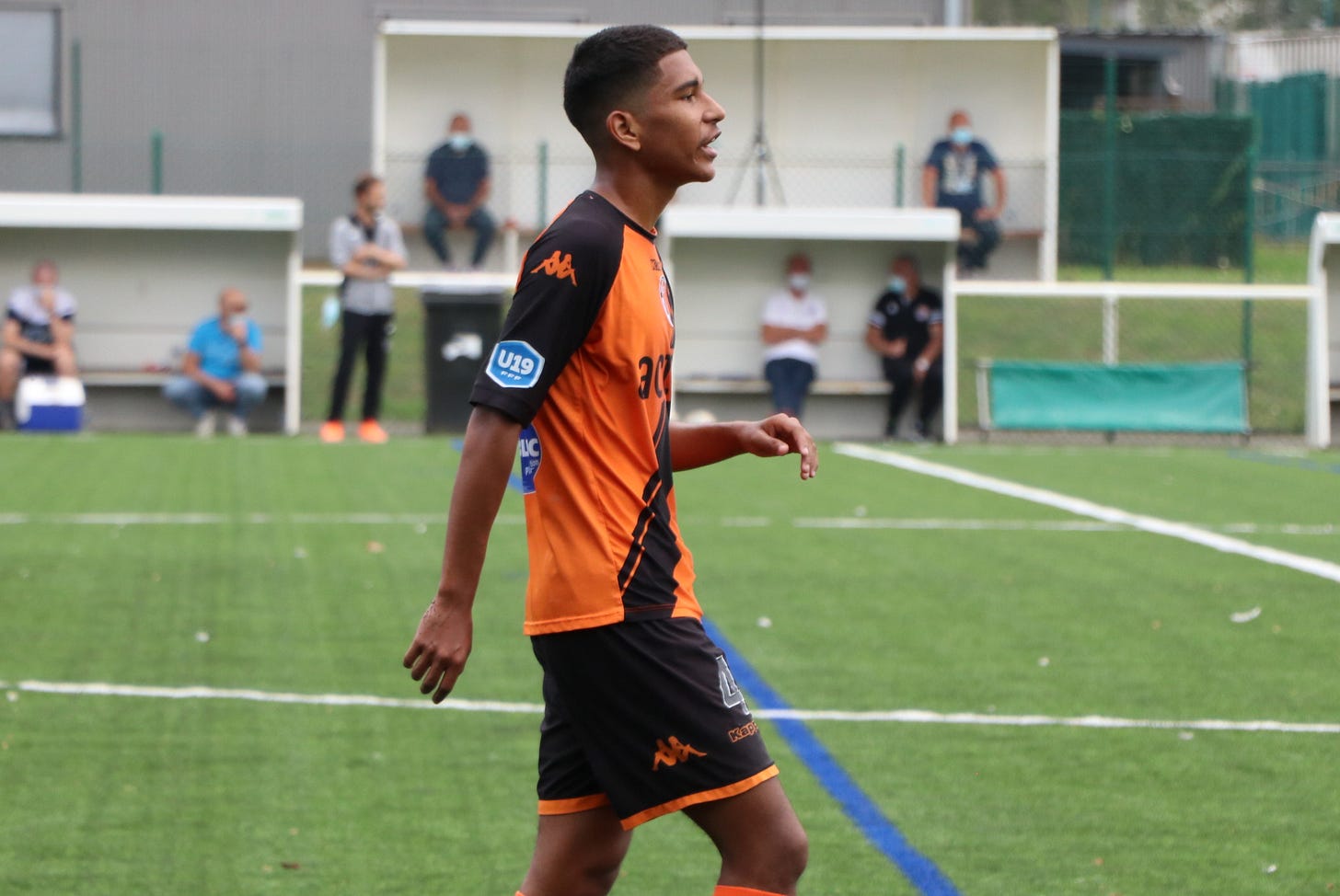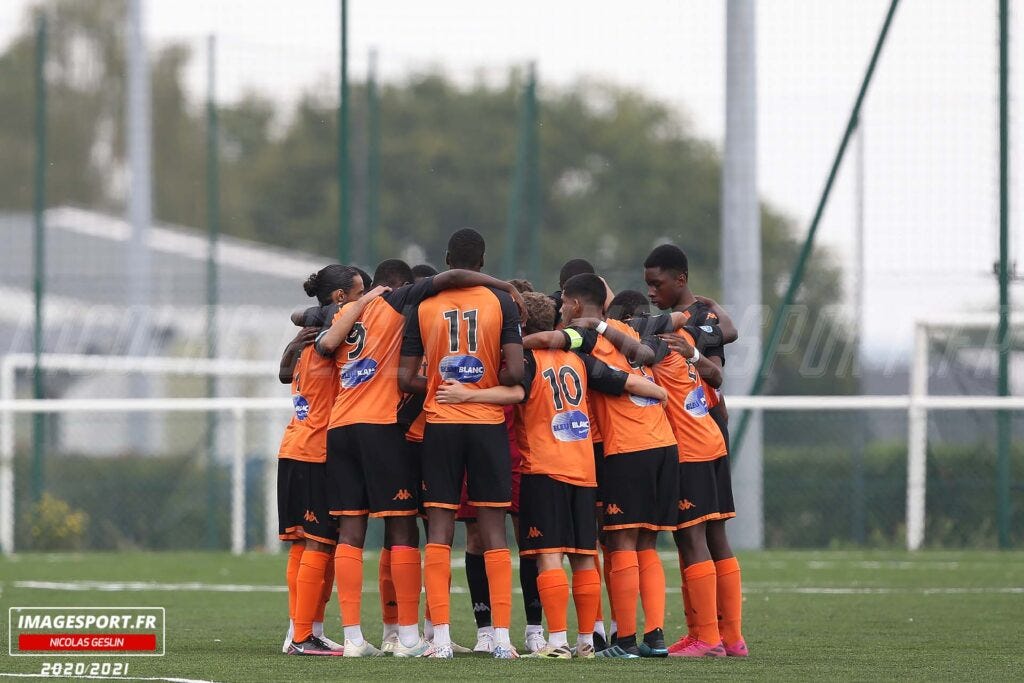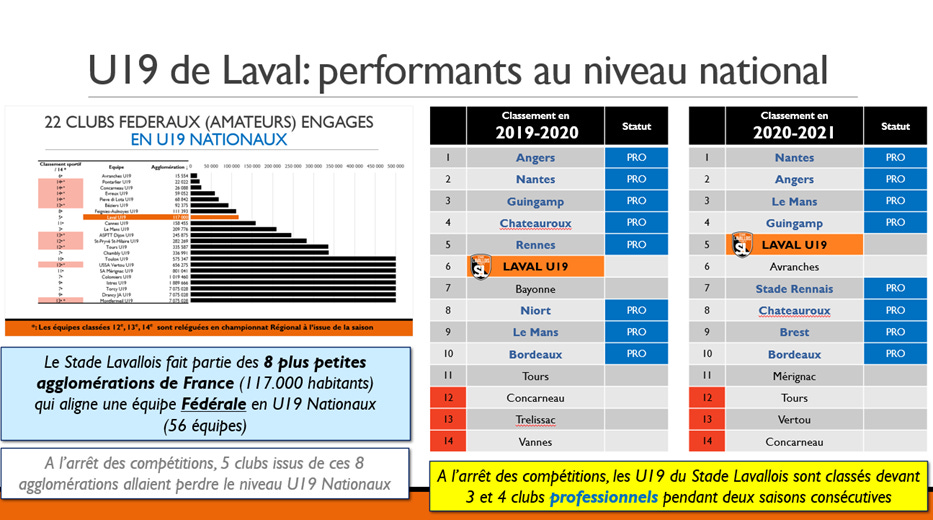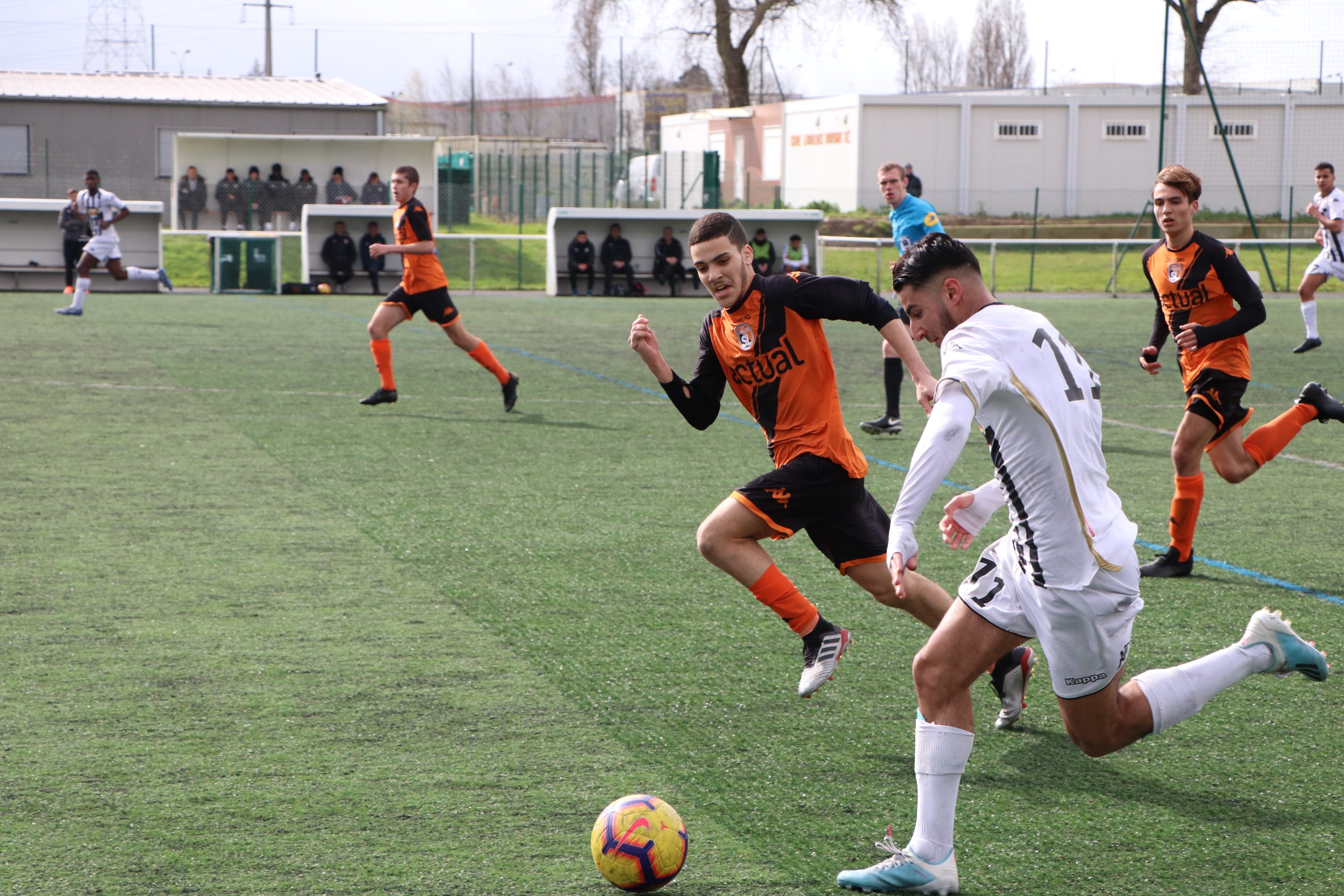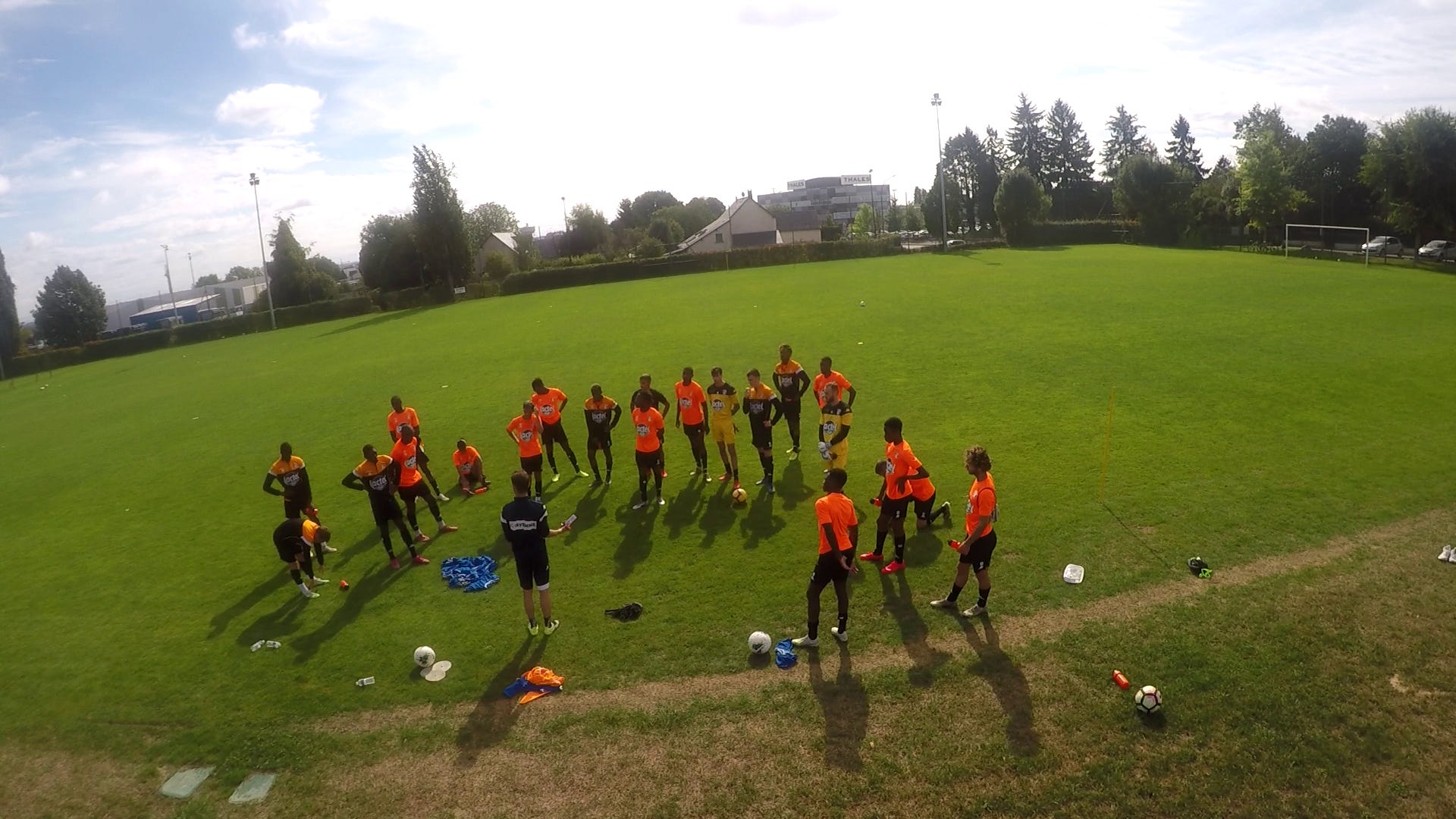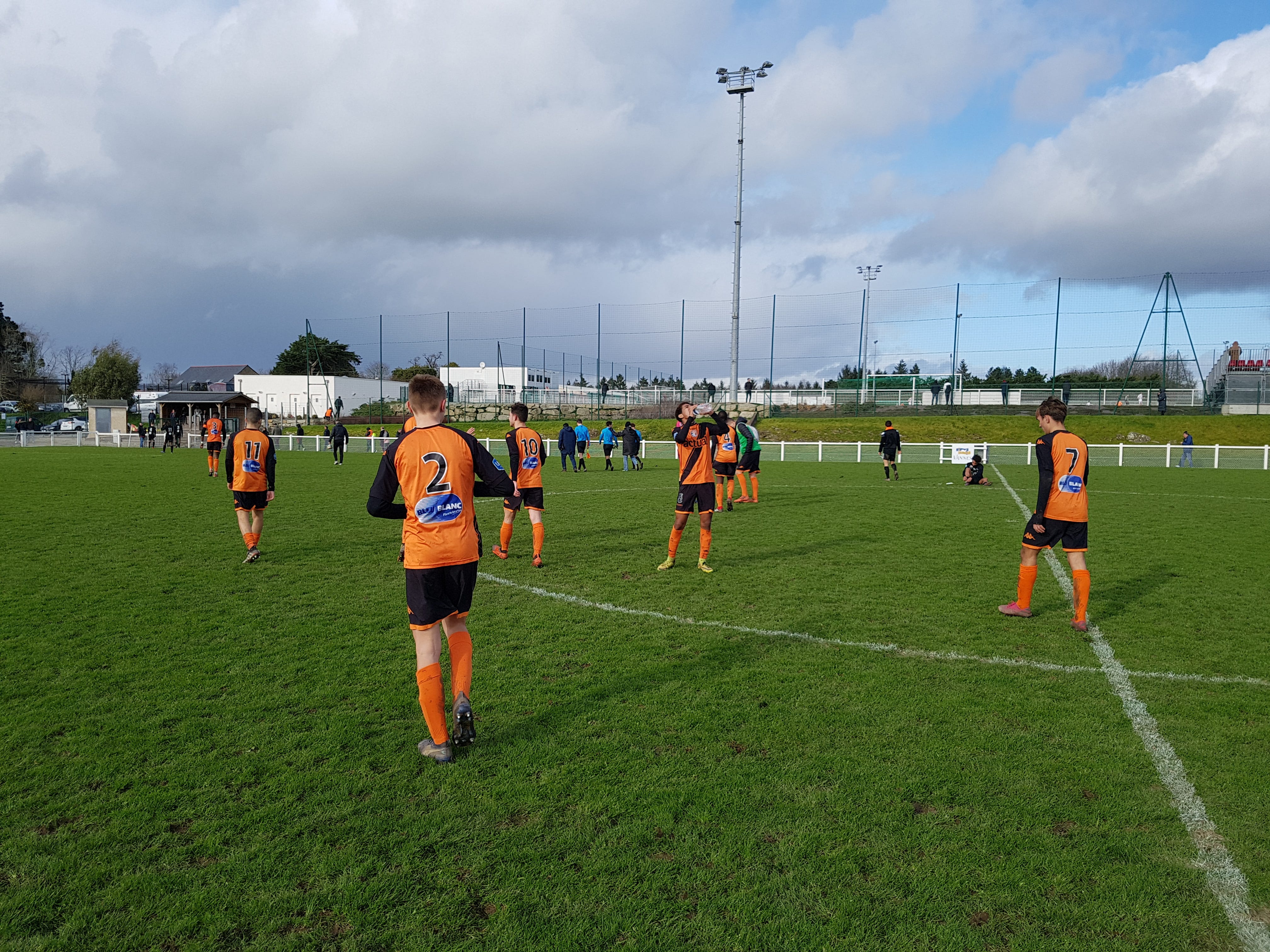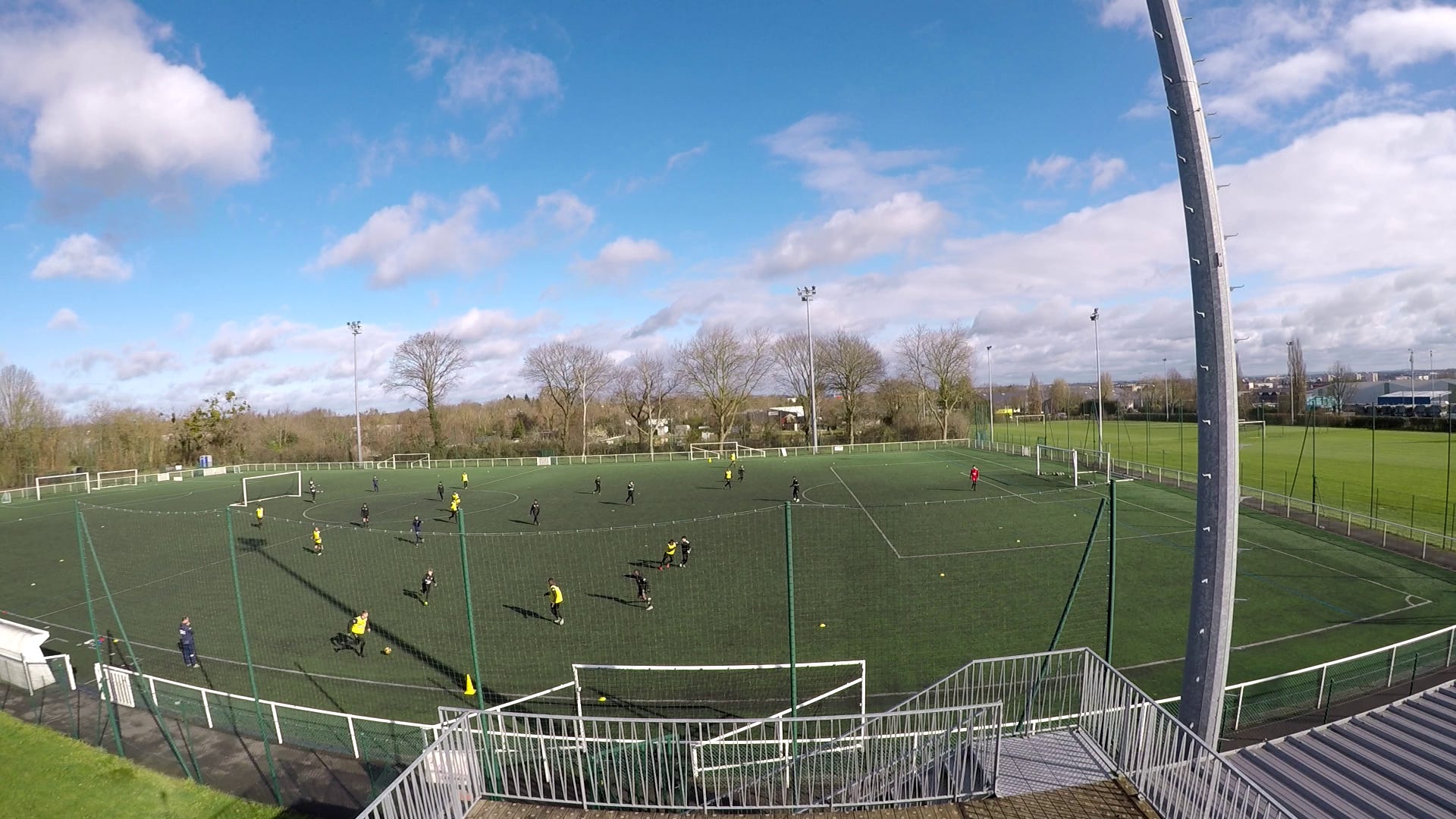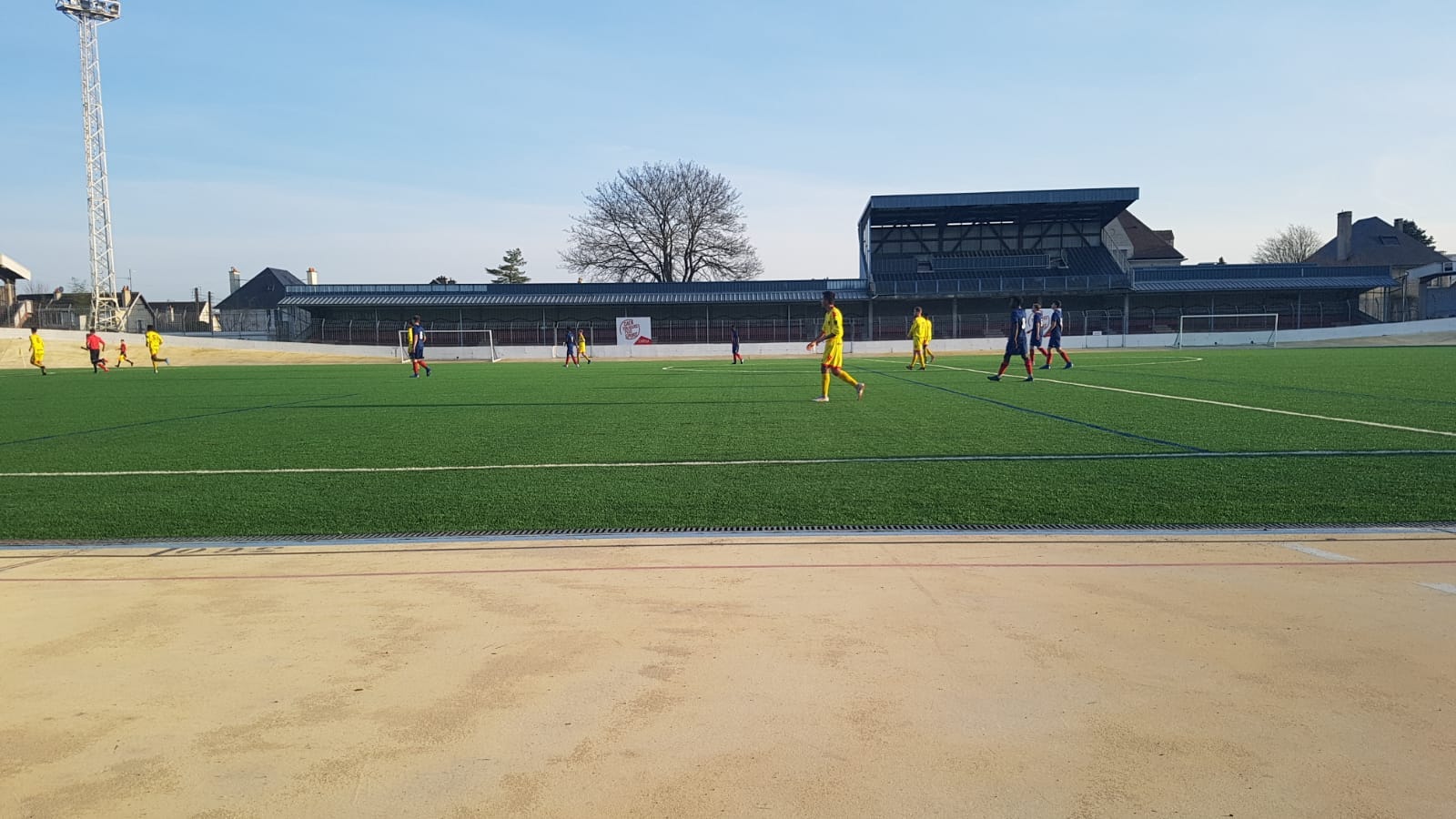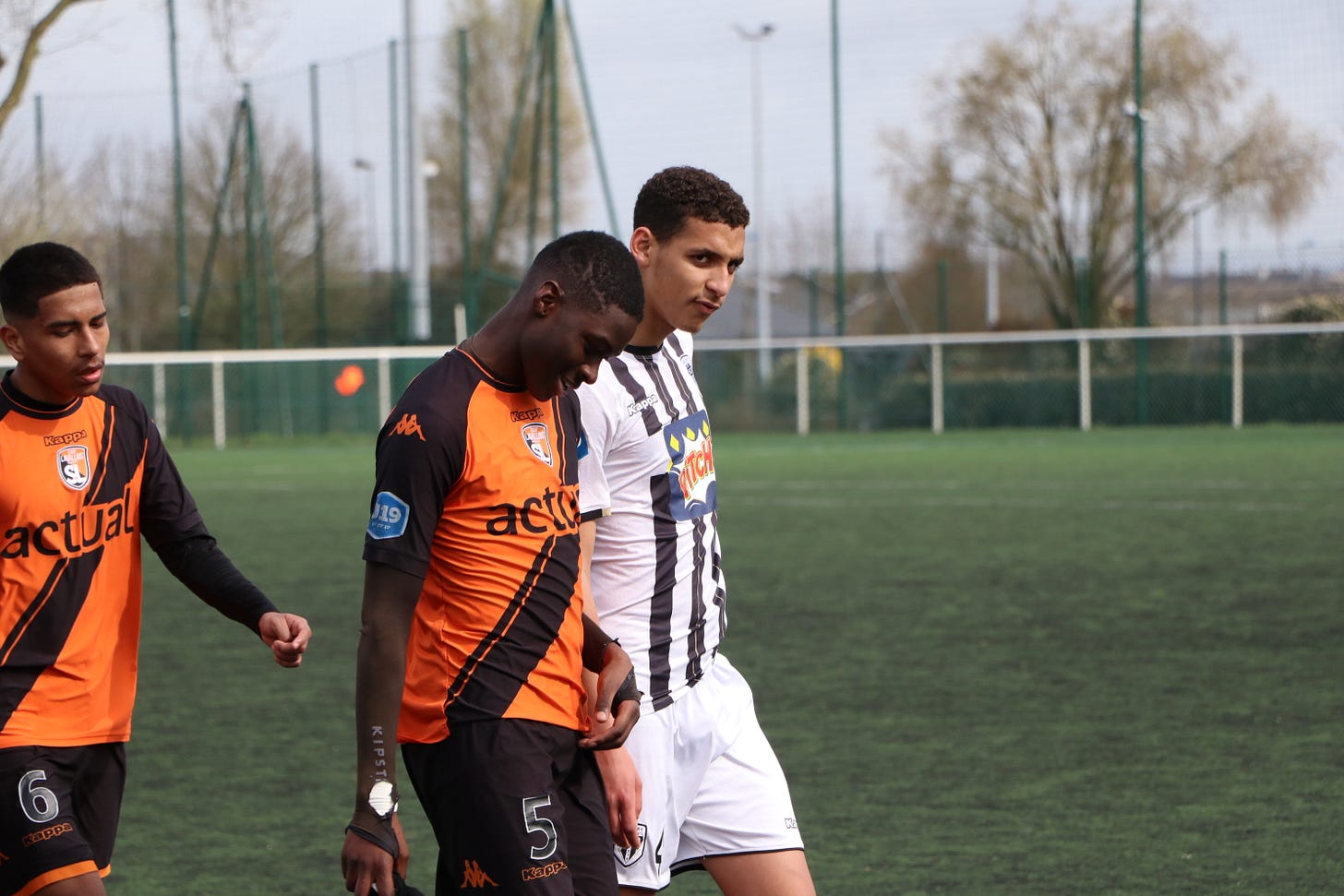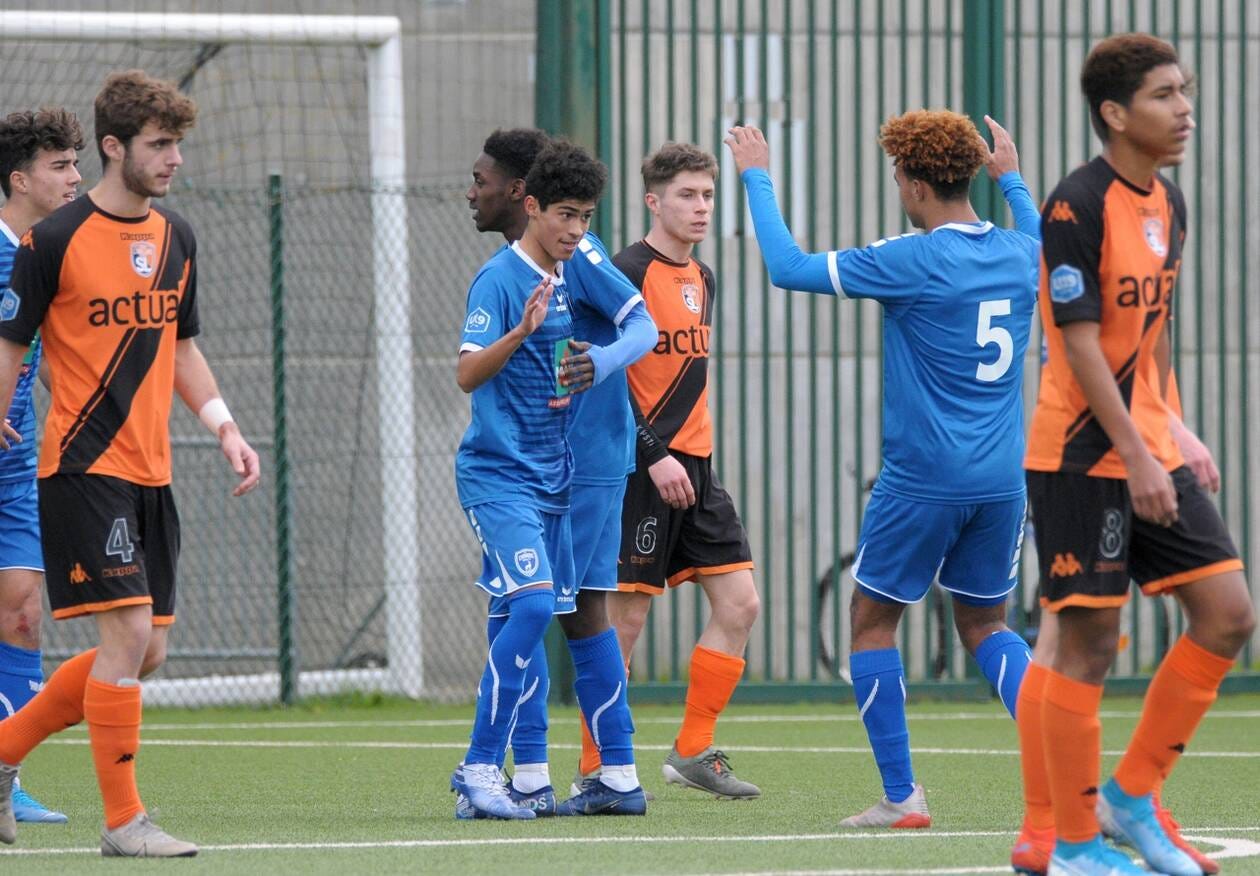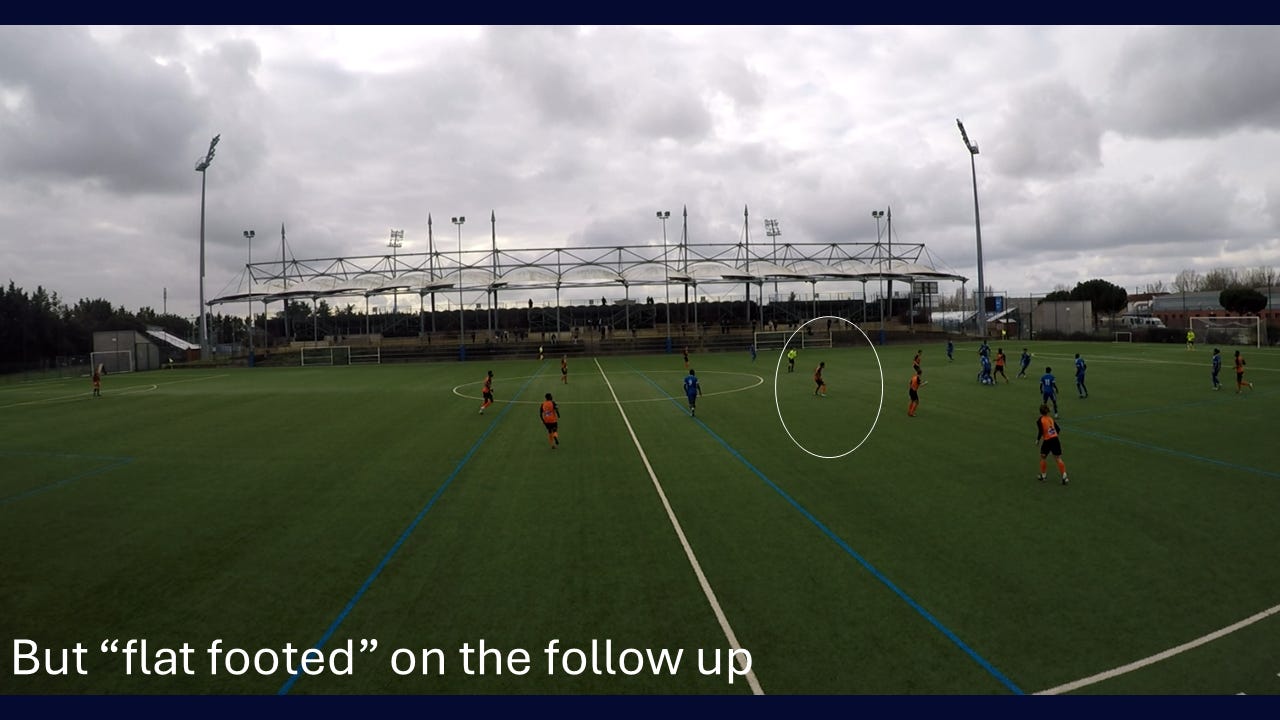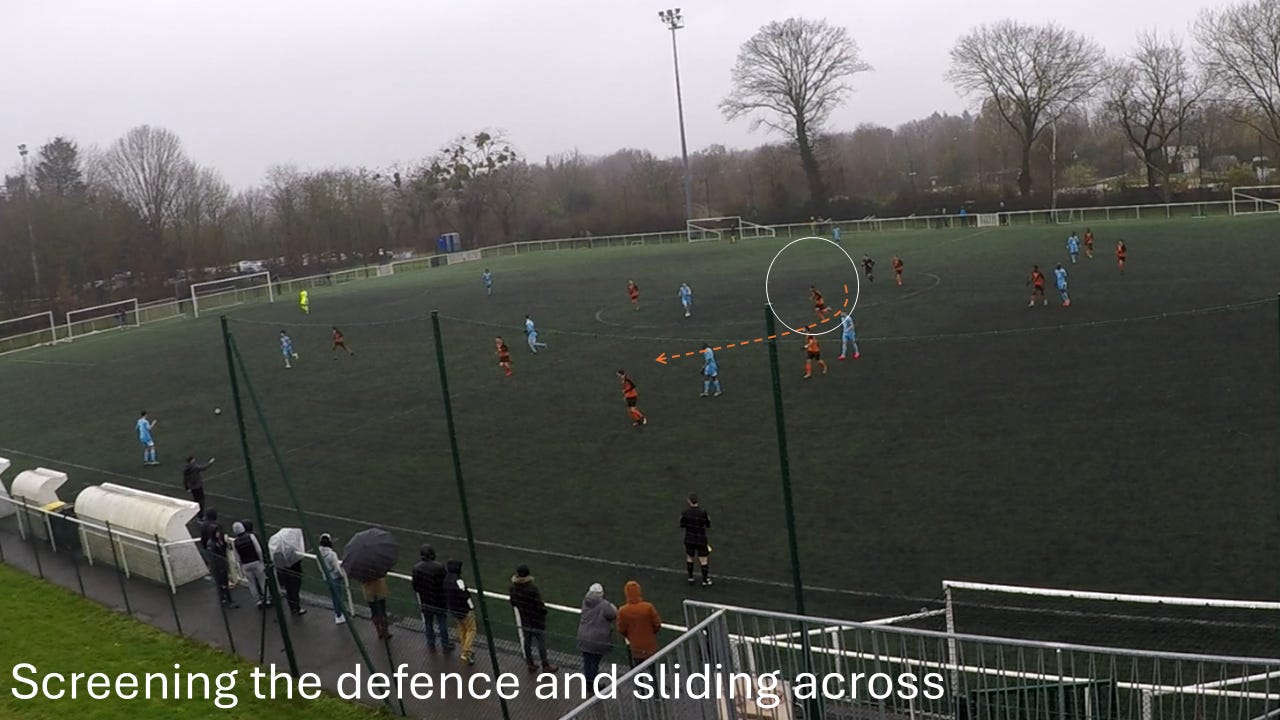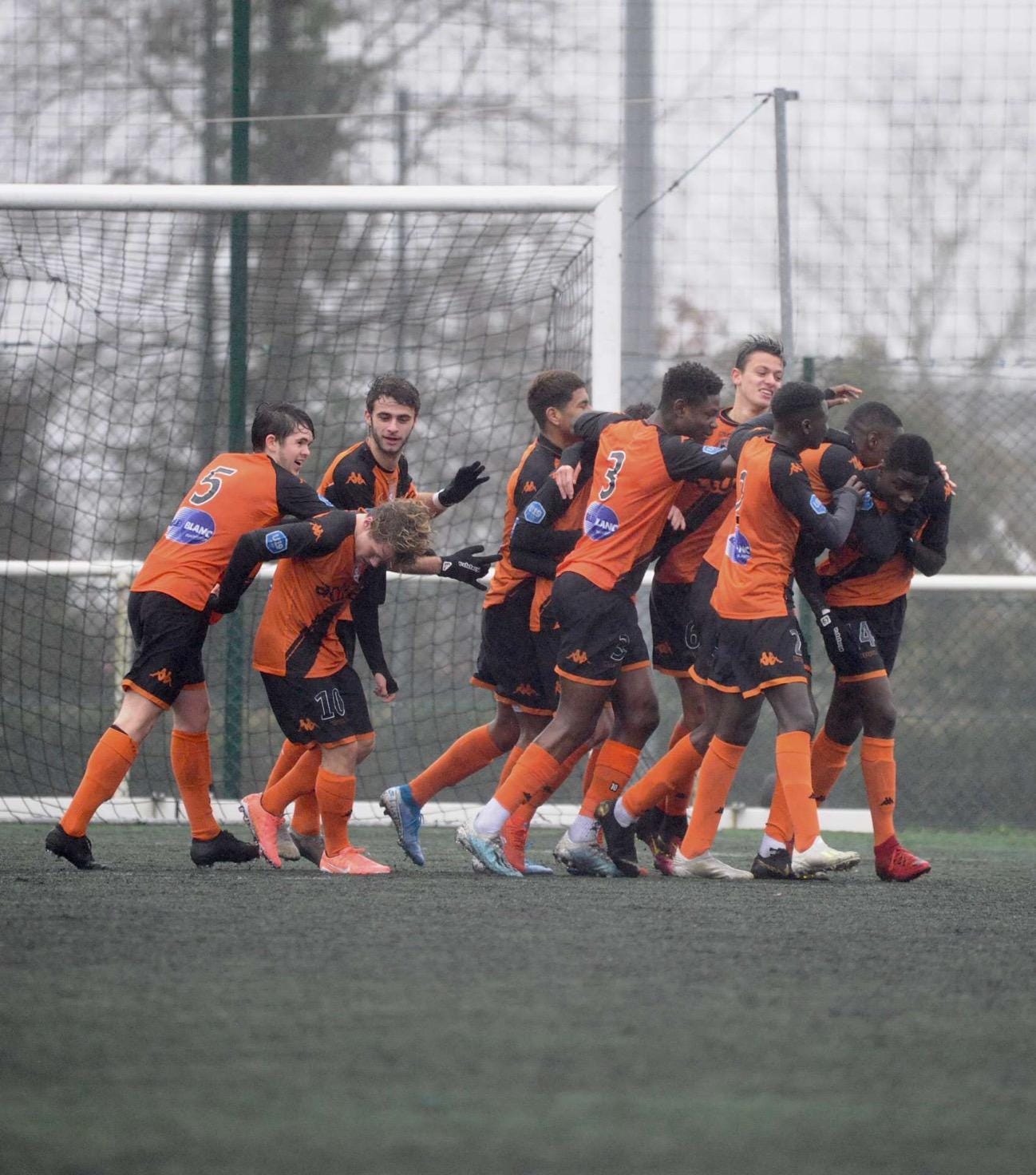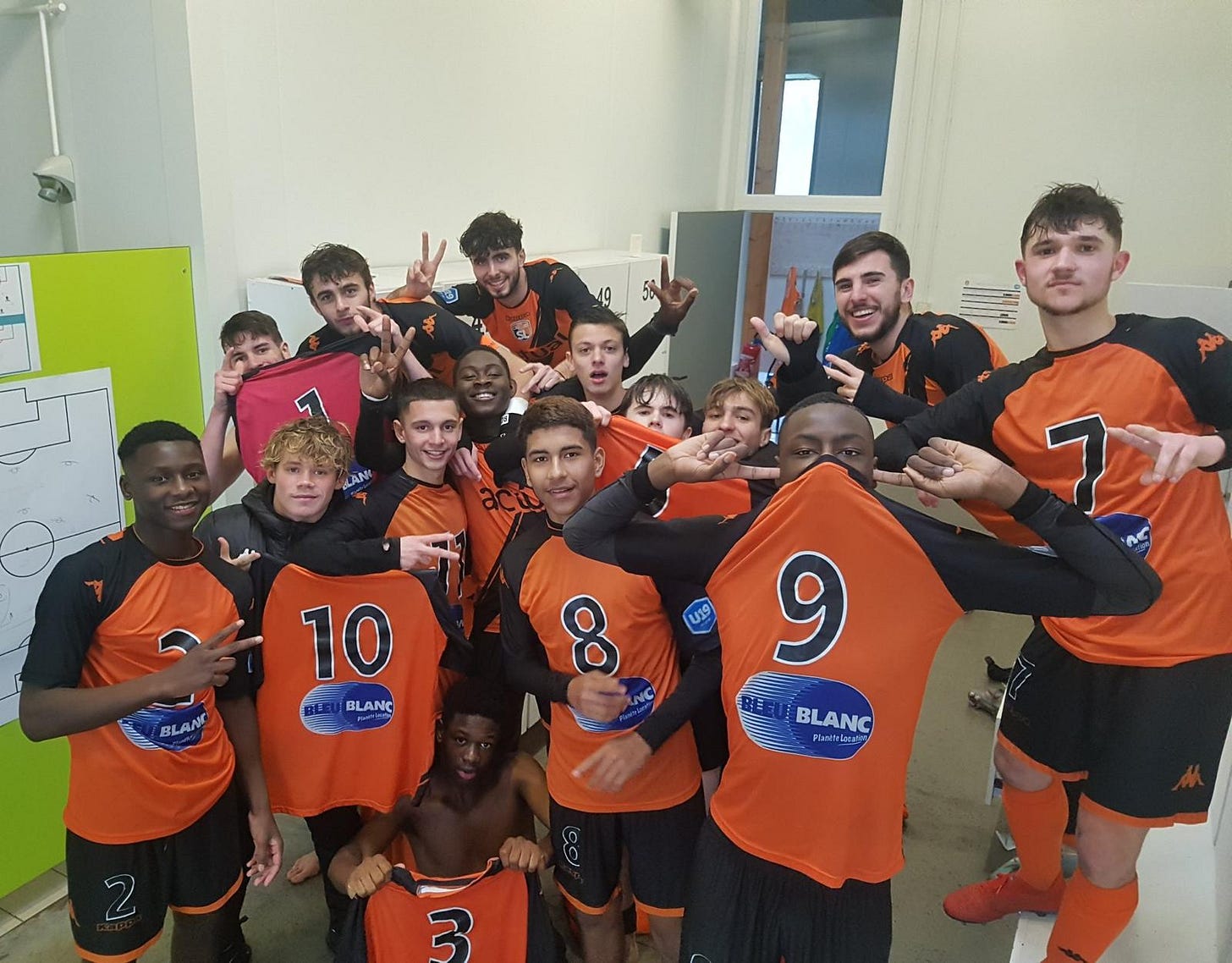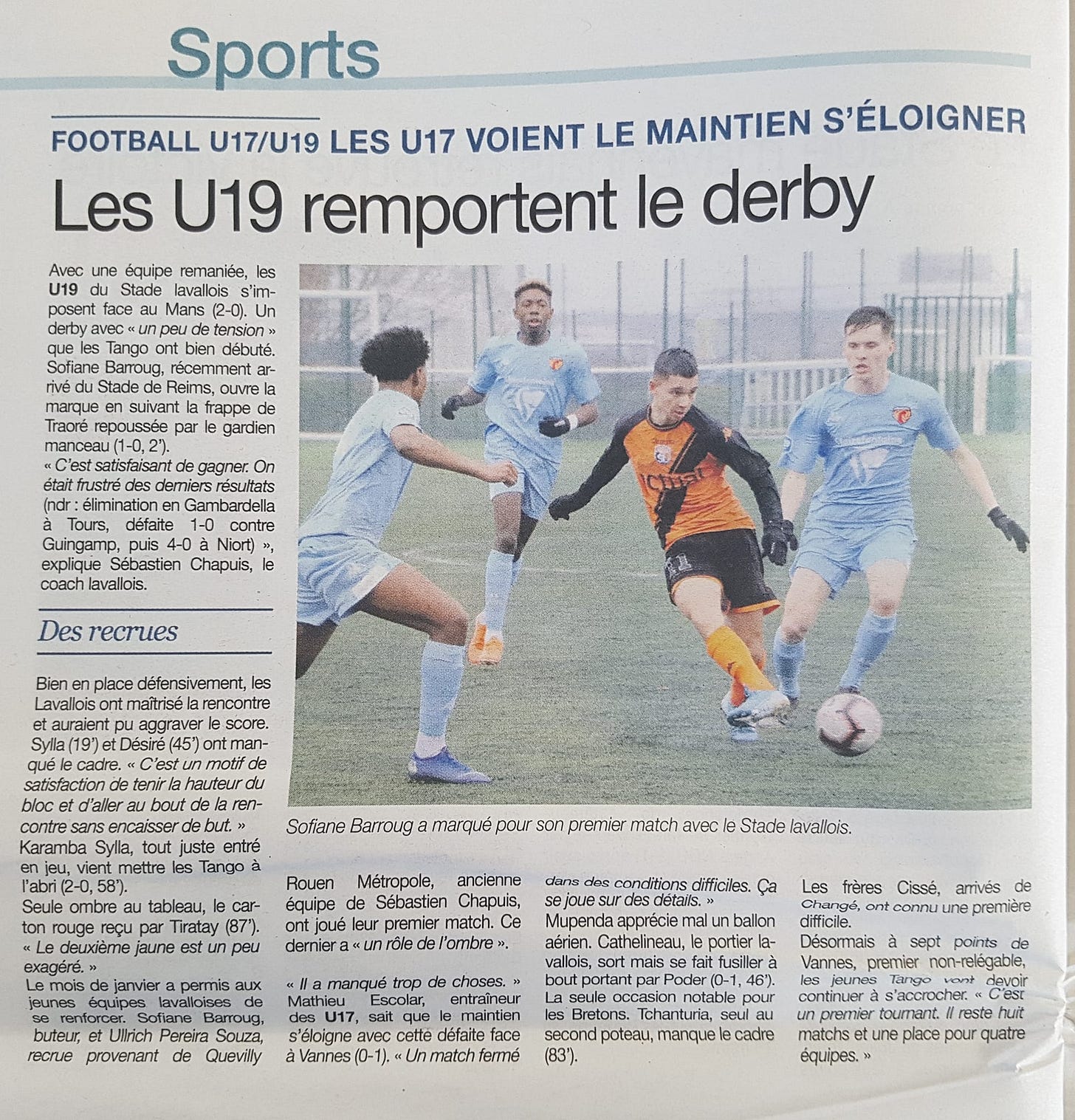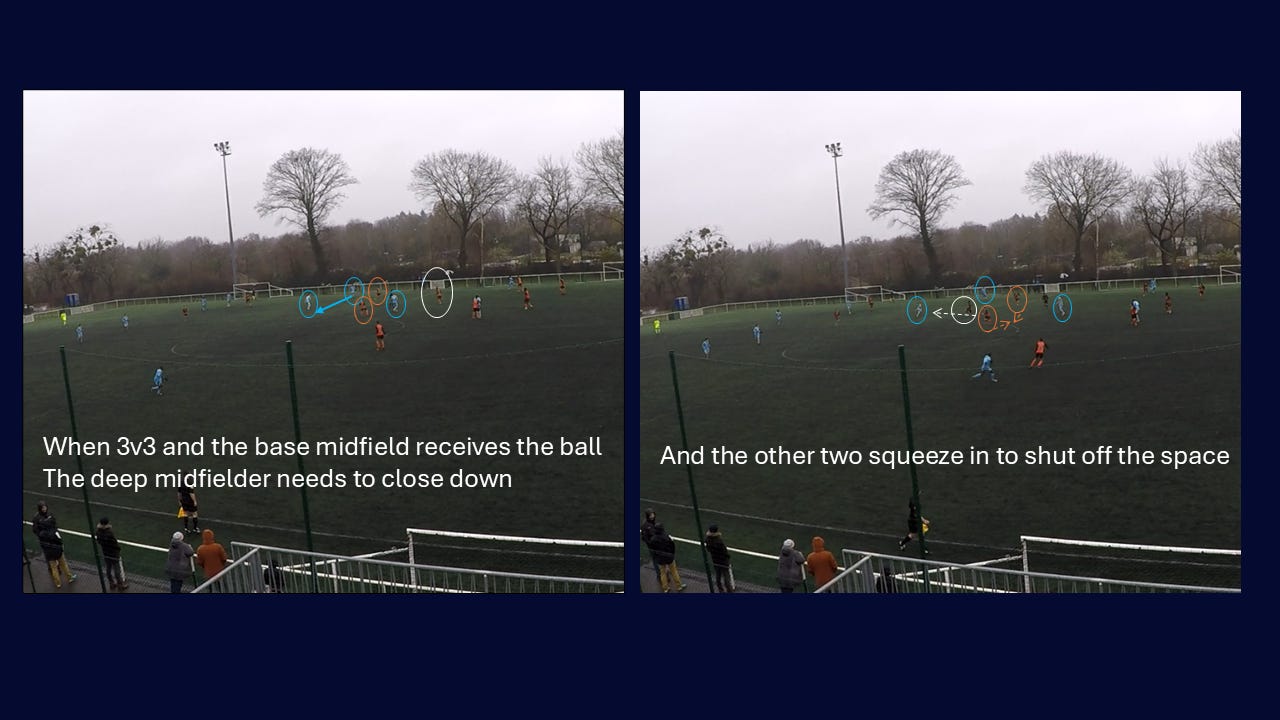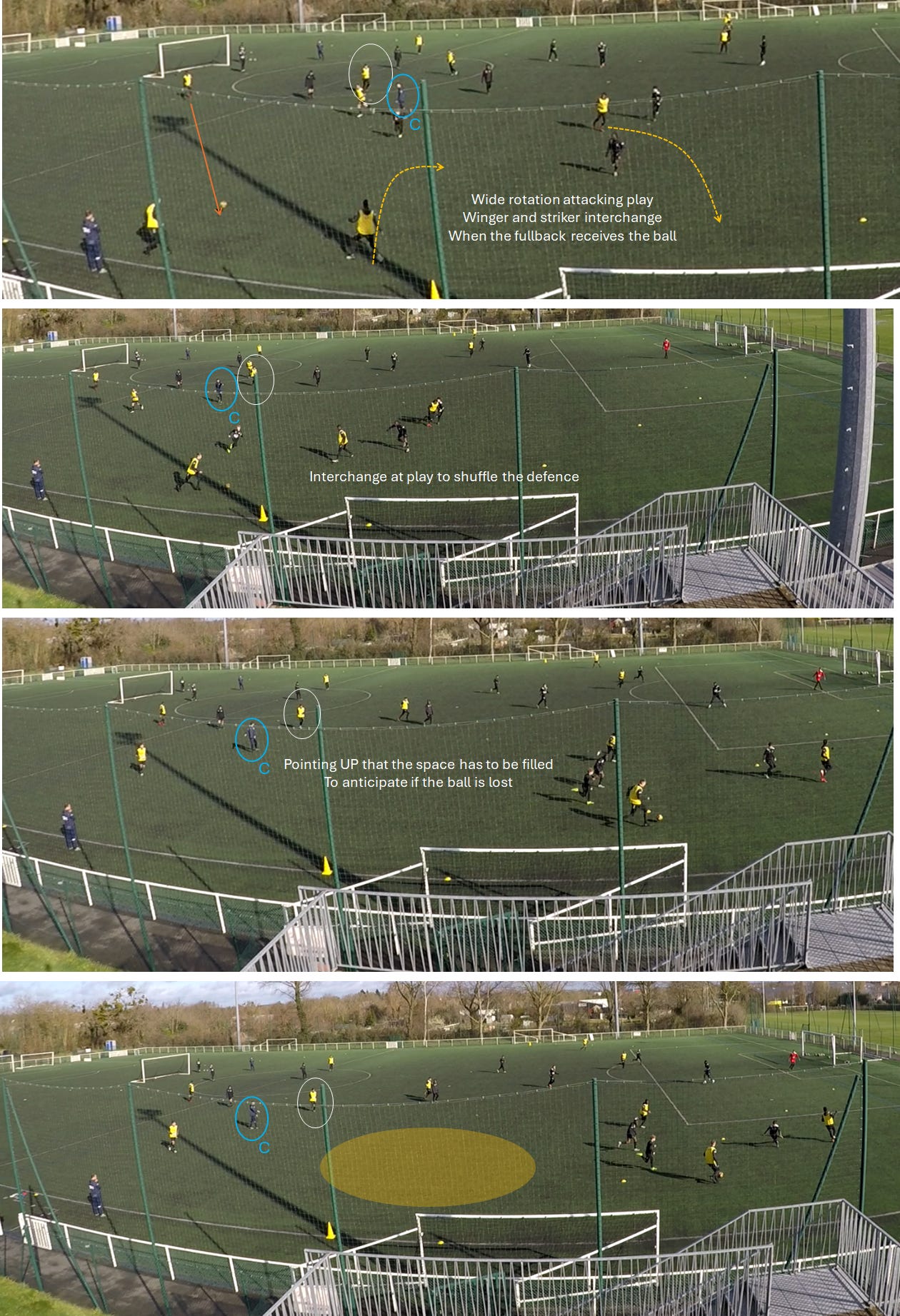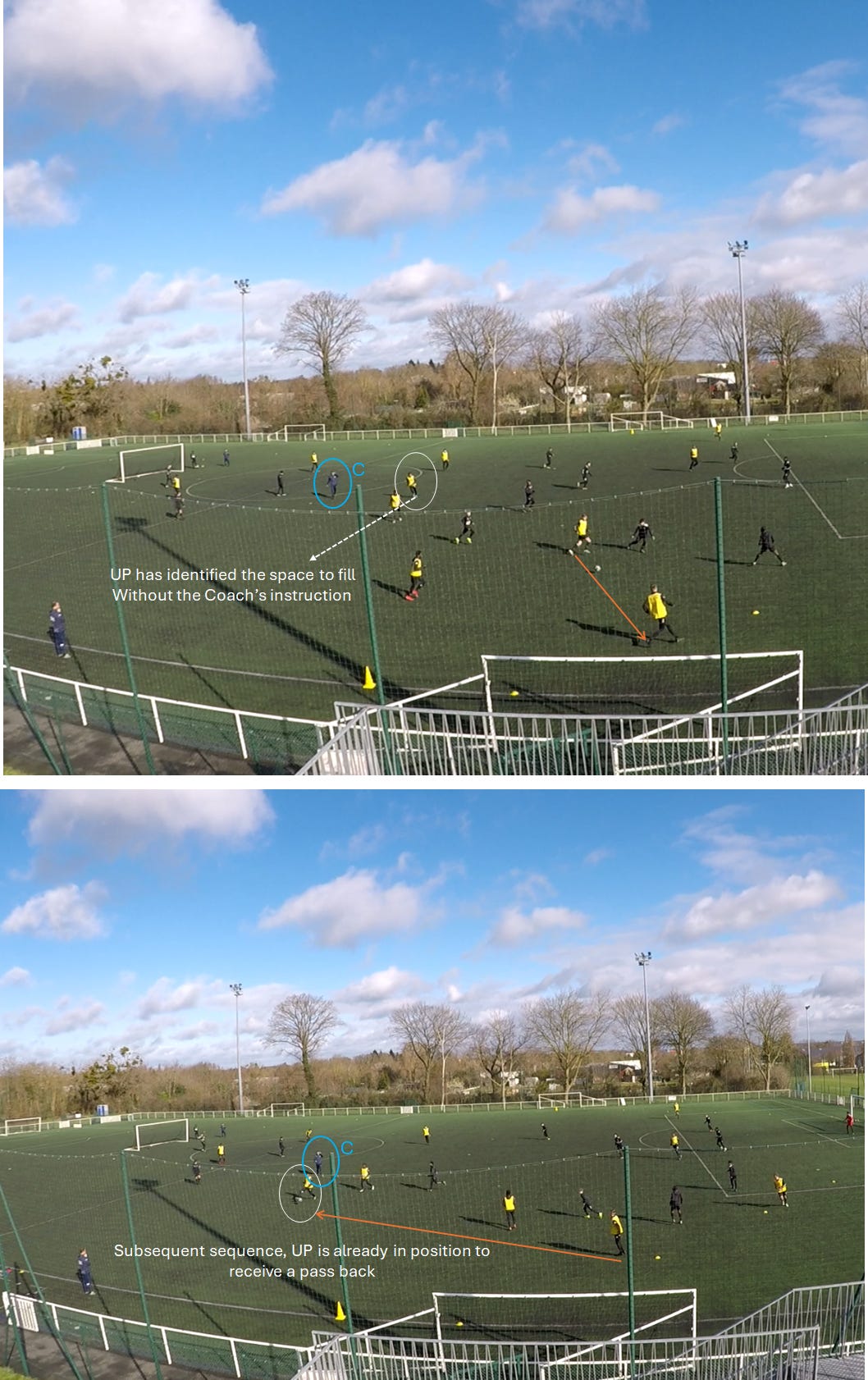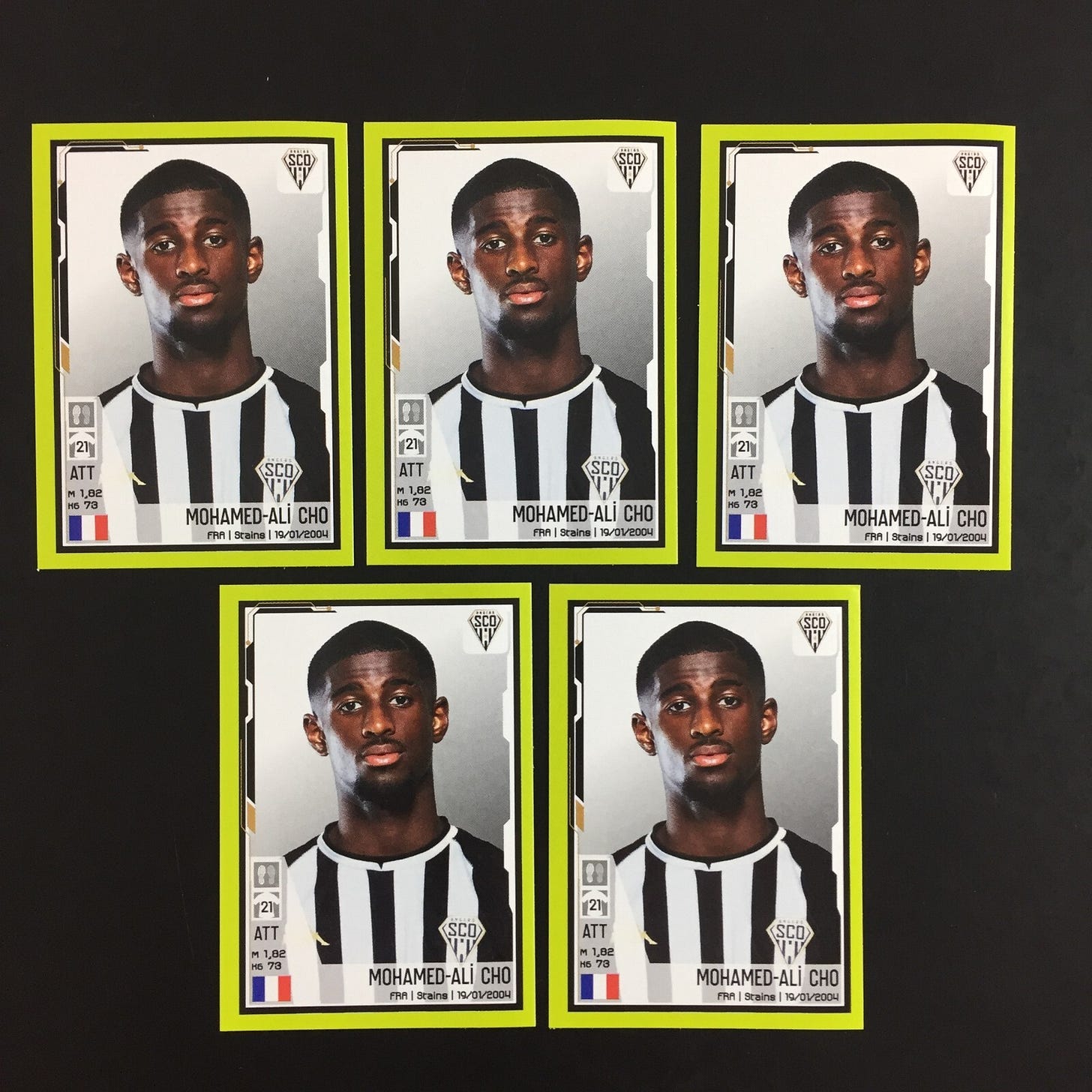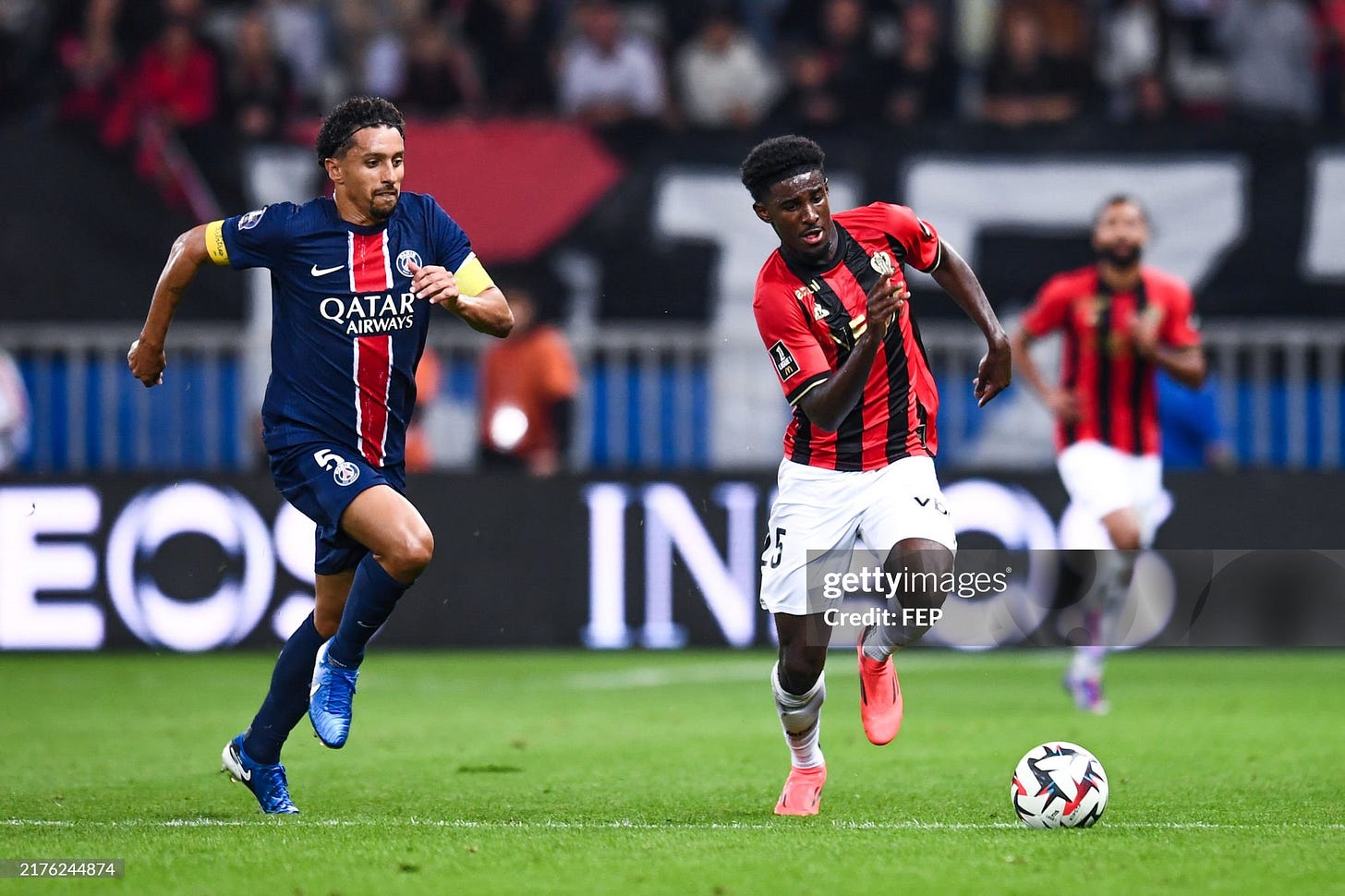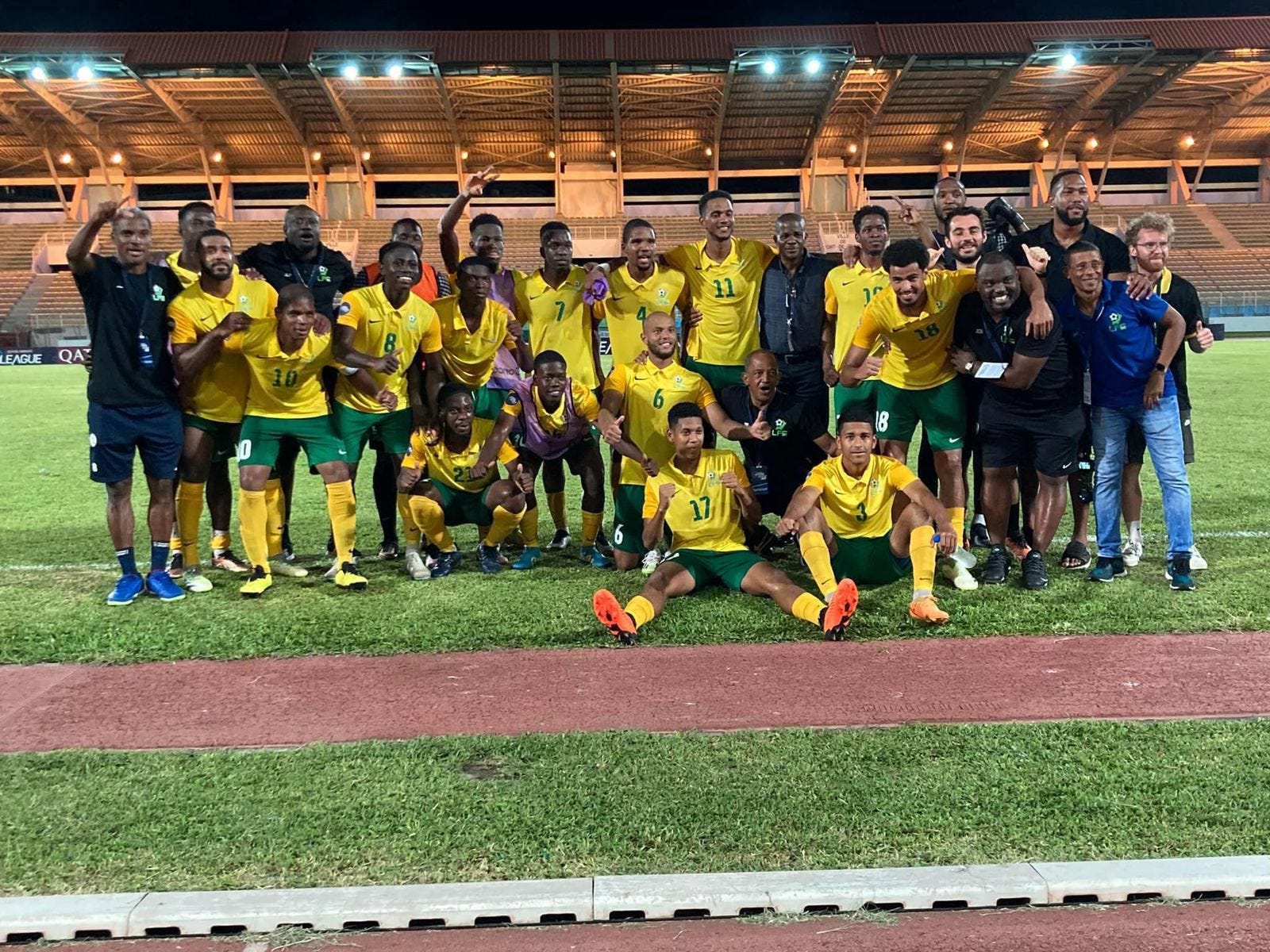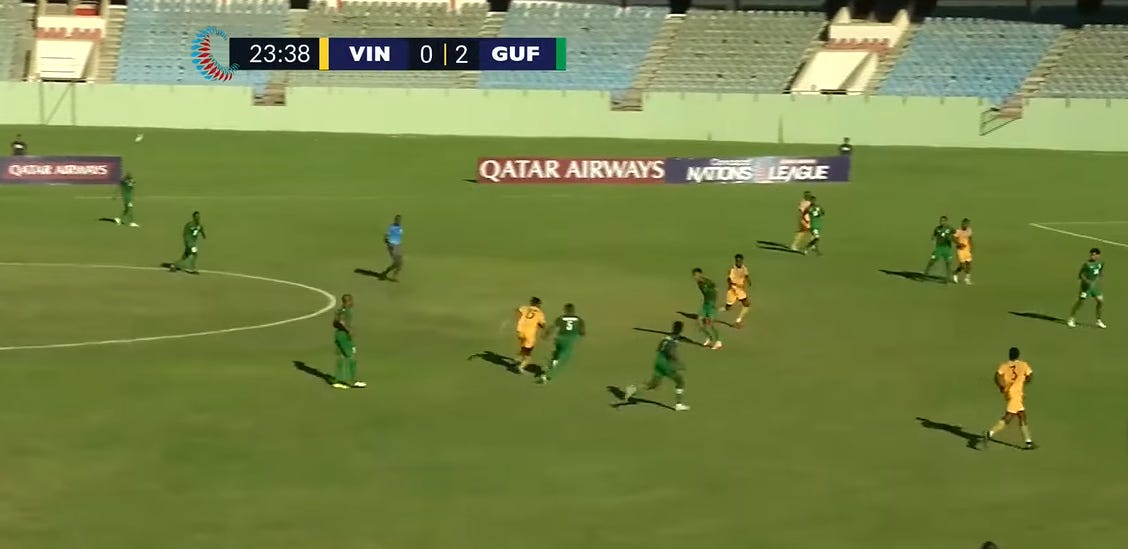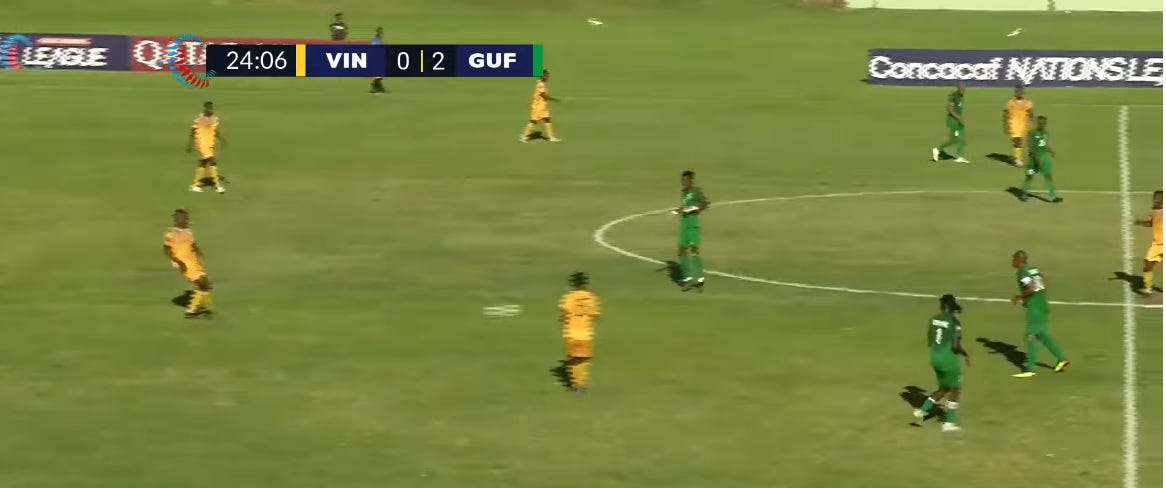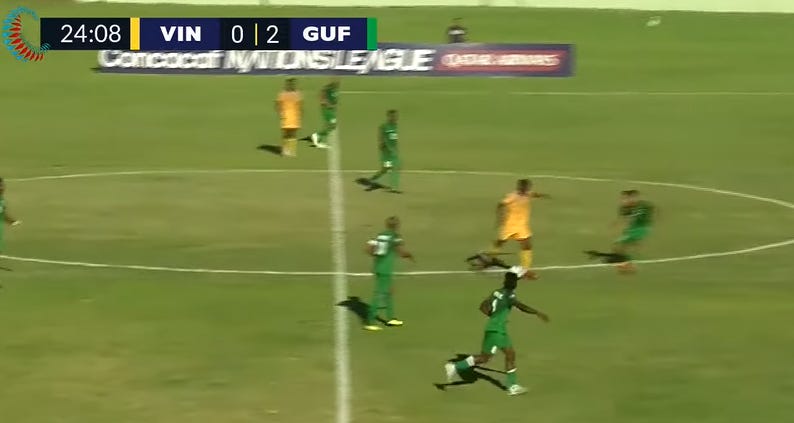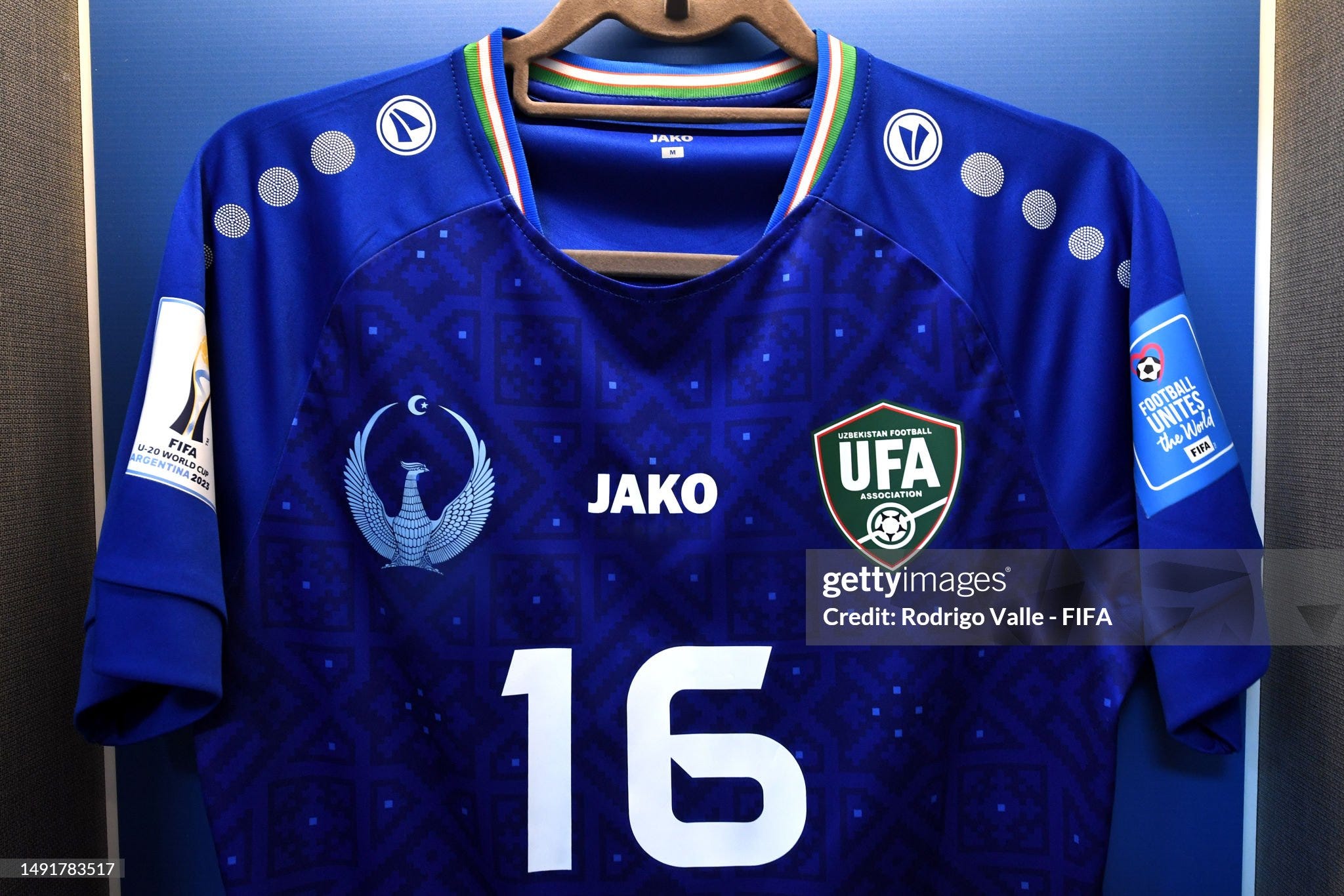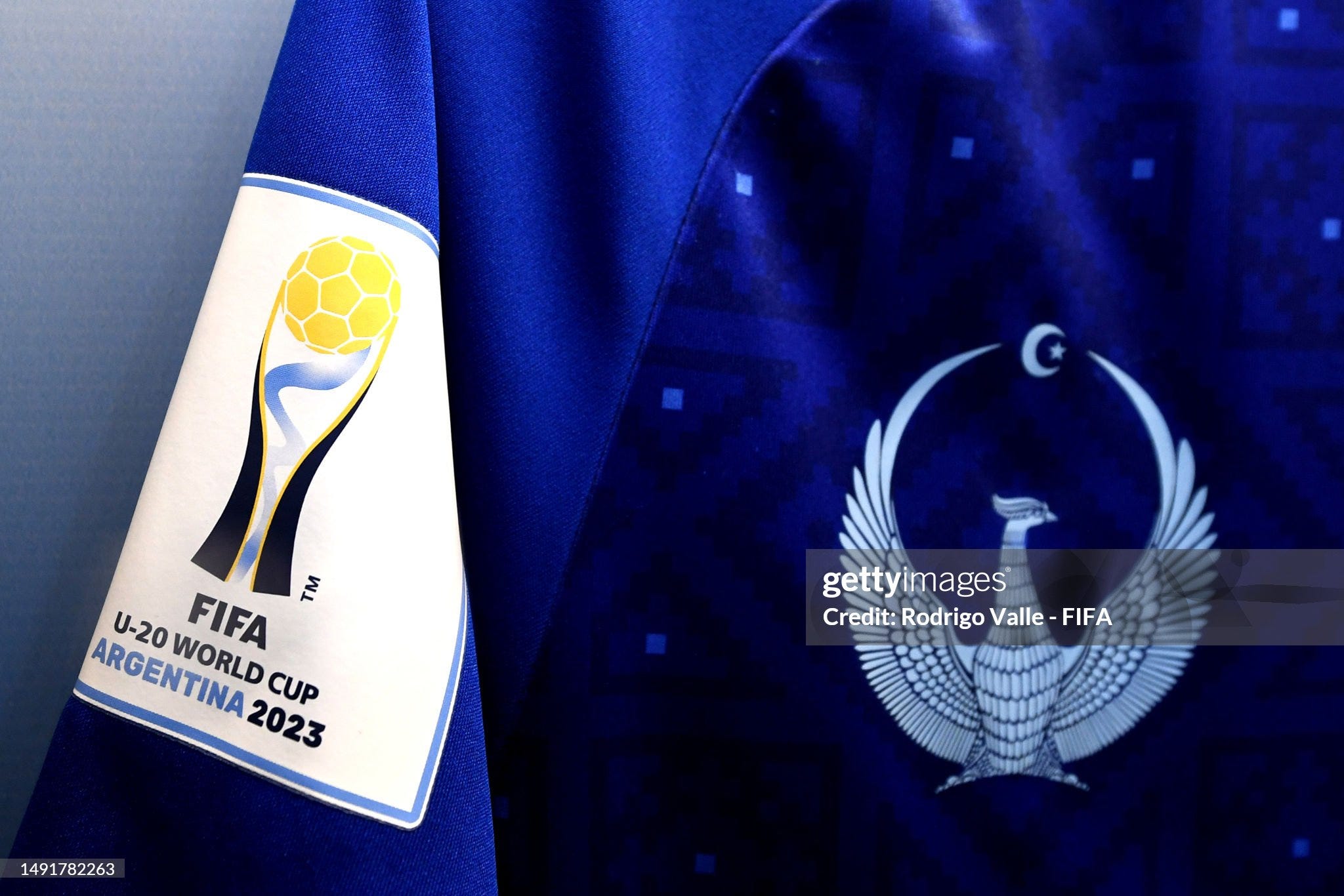There’s talent everywhere.
Football’s biggest challenge isn’t to solve goalkicks, but to break barriers to allow access to opportunities often gatekept.
For sure, some non tangible scouting criteria are often overlooked when it comes to scaling up player quality, or adaptation to a new country.
But then again, if you think there’s systematically a better return for the money to sign the 40th Spanish or German player of his age group, uprooted in Franche-Comté or Lancashire ; than the best player from a country whose inproved talent program put them on the map* ; you might end up disappointed.
Unless the purpose is to recruit squad filling not from your own Academy, but from agents catalogue backpage clients that you otherwise would never get close with a bargepole if they actually sent a paper CV and an USB stick to the club’s office.
Abdukodir Khusanov.
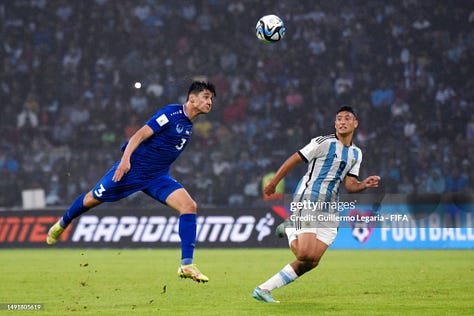
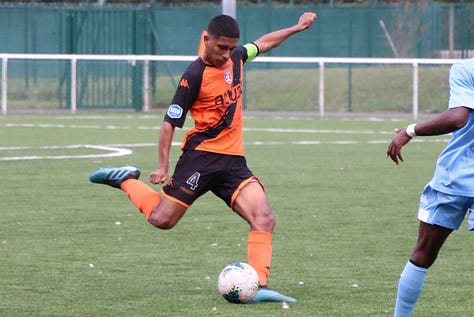
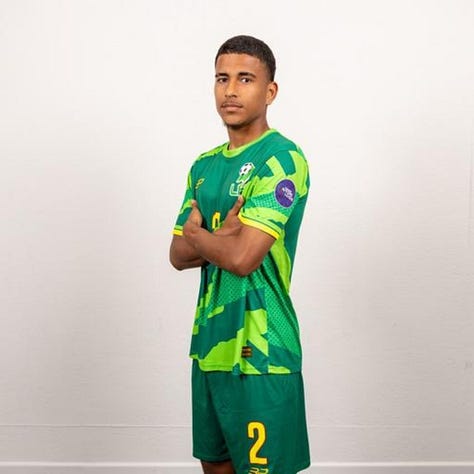
Also bits of Ullrich, the process to coach individuals within a team set up ; via training and video feedback.
Ullrich is a midfielder I converted as a central defender, for his reading of the game, heading and surprising eye for a pass. Also deceptively rapid.
In had him on individual video feedback session every morning based on the training the day before ; until we could set up his scholarship.
Disregarded at U17 level, I moved to a better club to take charge of the U19s, I brought him along and he ended up captaining the U19 team (with the UEFA armband👀)
The team that beat the club U19 consecutive clean sheet record as well as U19 Champions 4-0. Perspective.
He then made his senior international debut the year after for Guiana
Some people thrive on competition, definitely the fiercest individual when it comes to desire to succeed I’ve came across.
Chubby and undersize to play at the back? Oh wow wait hold on he’s rapid?
“I don’t see it” ; surely now you do. “you” being the strawperson(s) I found on my way.
Is it woke to say strawperson? nonsense.
“does he speak French”
“with all due respect Madam, Guiana is France”
For reasons, Guiana is part of France.
Kourou - Paris / France is 4400 miles
Tashkent - London / England 3200 miles
Can you perform consistently ; away from home?
I sat down to watch the U20 World Cup in May 2023 having to take my mind off things, and posted a series of tweets.
Back then, Khusanov was still at Energetik Minsk in Belarus ; and would only join RC Lens at the end of July 2023.
The Khusanov tweet made 4.8k views, zero interaction by November 2023 when I screenshotted it for a MSc project PowerPoint (yes, I love PowerPoints).
Funny thing, I put an arrow because there wasn’t any picture at Half Time, and I think now that’s not even him (on the photo).
The player, on the other hand, well I saw him.
* : Uzbekistan edged Iran to win the AFC U20 Asian Cup™ 2023 a few months before the FIFA U20 World Cup.
Get out of the way, hinsight is a hell of a drug once Khusanov is tipped with a 50 million move to Manchester City - still less expensive than watch Ligue 1, for a mere 25€ per month to get air time five minutes before kick off, and listen to influencers at half time.
Conversely, one can complain about the price to watch football. The U20 World Cup was broadcasted free of charge on FIFA+, and the full game is (still) available online.
A pinpoint perspective on the scouting cues to flag up when looking at a centre back.
45 minutes to come to the conclusion “hmmm… there’s something there”

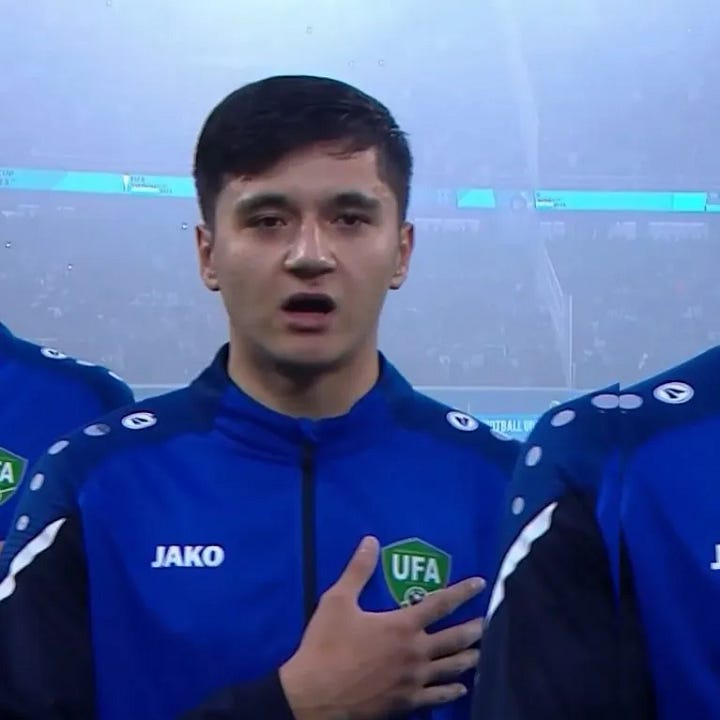
Uzbekistan was playing a bold 343, with good combinations and almost spoiled the party for Argentina hosting the U20 World Cup. Abdukodir Khusanov (3) was marked as a side central defender, he actually played in the middle of the back 3, that's him jumping before kick-off.
How to analyse a CB
Do you put the ball out of danger
Do you read the game; move before the ball does
Do you stay between the goal and the ball
You need perception/action; anticipation; complemented with athletic ability to move fast in all directions / dimensions
Rolls Royce CB: Uzbekenbauer?
🇺🇿 Different class: Abdukodir Khusanov is a Rolls Royce of a CB
🔍are the cues you need to look at, which are above average and worth flagging up for a CB
🔍Seamless change of direction, not carried off balance managing his weight and footwork accordingly
Speed - can you move in straight line?
Some players are quick. Abdukodir Khusanov is *RAPID* like dealing with trajectories two yard clear.
Starts his covering run before the long ball is hit, gives him an edge. Composure, not hasted
Kindle CB - do you have the script?
Abdukodir Khusanov reads the game on a tablet
Why is that so? He’s always facing the ball, side on, never flat footed.
and impresses by his timing
technical library of skills to handle the variety of situations.
This is top level
Helmet CB - or wearing one?
Abdukodir Khusanov's heading game is very strong, look at these scoops!
- Heading backwards!
- Wears a helmet?
- Solid stance to secure landing point
- Top level nudge
Baby cutback? That’s a player
I have success in coaching by turning misfiring strikers into CBs.
Or DMs. More on that later

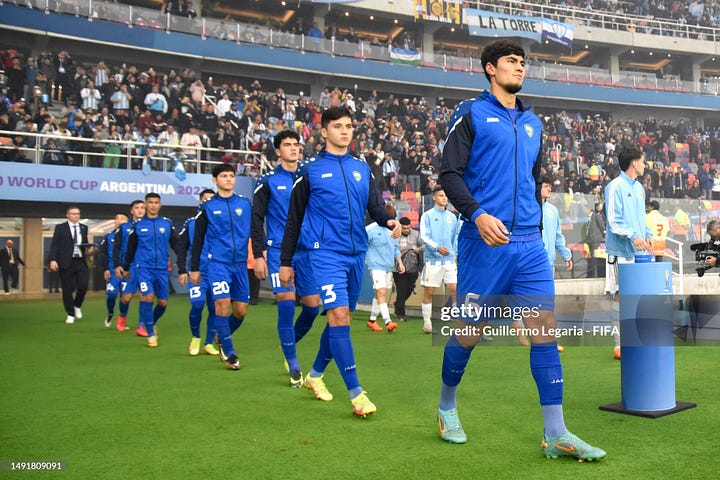
Benchmark movement is the same, go around the penalty spot, go for the ball when it's hit, interception-pass.
Khusanov seamless jockeying at speed
Goalmouth defending:
the Yin/Yang of defending crosses. Usually fast defenders struggle at defending crosses, Abdukodir Khusanov doesn't
Jockeying on the side to take all information and not shank a clearance in his own net, always between ball/goal
Some plays Khusanov didn't do too well in
- good footwork in the play, beaten in the air
- Vincent Kompany special
- Over-did on the goal trying to channel wide
🇺🇿 Food for tacticos: Khusanov was in the middle of the back 3, but often jumping a step ahead to disrupt Argentina U20's pressing
🇺🇿Look at the quality of Uzbekistan's ⚽️
Don't let any waffler coach gaslight you they haven't got the right players
⚽️🇺🇿 🇦🇷It was a wild game, worth re-watching. Opening ceremony, lots of pressure; quality plays.
The goal is hilarious, the player isn't offside, and goes like "fuck it I'll score anyway".
And fucking did, from the stupidest angle I've ever seen 😂
Conclusion
Act like you've been here before. Khusanov moves early, fast in all directions. Has technical solutions to handle every trajectory Masters defending in space and box defending These are rare traits put altogether, and never looked out of his depth. Always clear
The other takeaway; as Khusanov will be the most high profile Uzbek player ever There's good players everywhere. Give chances; and accept to move on to give a chance to someone else. Football's challenge is to break gatekept access to opportunities, not short goalkicks
Maximising local talent pool ; and looking elsewhere
I won’t dwell much on the backstory to this.
Ullrich was in the club I was in Normandy as U17, and despite trials at Le Havre a few years before, was in the shadow U18 team between the National U17 and U19 teams.
Whatever.
Can this make an impact if you’re literally the worst U17 side in the country, winless in December? Disneyland may not only be the place where you go on matchday leaving the team being coached by whoever fancies it (per design).
I took a bigger opportunity to coach full time at U19 national level in December 2019, becoming in the process the youngest coach at the level.
I also signed Ullrich in January
The club lost the academy status (after platforming Guirassy, Mukiele, Solet in years before) so would be in the equivalent of a Category 4 club in England (in terms of contractual protection) ; still playing in the U19 National League (4 groups of 14) against Nantes, Angers, Bordeaux etc…
45 players for three teams, (16 per game sheet) and U17s being rock bottom, with numbers required in midfield ; it seemed a good opportunity to look at players who could add a bit of quality across the two teams. Such as Bamo ; mentioned here:
I’m not so much a “ingrain a pattern of play” kind of coach, give me players and I’ll work on fundamentals of moving before receiving etc.
More about getting player through an evidence based, MSc supported (mine and my S&C coach’s) training program. Key to consider moving players from Grassroots (3 sessions a week) to 4-5 sessions a week.
And yes, also because playing players one year up, if not at excess (an entire team won’t compete) usually gives you a better output (as players have to be at their maximum) than U19s in the very important U18 / U19 seasons during which they might already have the mind somewhere else.
The transition towards senior football
France has a U19 National league, in many other countries the category is U18 (like in England, albeit England work with September as cutoff line, France does January)
A good U18 can be expected to start training with the U18, then the B team, then maybe show up in first team training in the same season.
U19s at this level are supposed to play B team footall
That management is thoroughly important and has to rely on a forward thinking squad planning to make sure the journey is linear (and the player not canned after “failing to meet expectations” - which more often than not at first team level, delves more on “bring one more human training cone" than actually challenging the starters - do wear shinpads).
I had two future professional fullbacks in my U19s ; why exactly do the first team need to sign a third right back in October because they injured the first two?
Cause-consequence ; one of these first team fullbacks will play for the B team, and the U19 who was meant to play senior B team football, stays stranded in U19s. And my second (future fullback) on the bench with limited options to come on.
Down the line it’s 1. stupid ; 2. you can’t even think about making a buck down the line
Previous directoship than current one : chairman on the bench, secretary in the stands.
Dozen of millions out of sales from Guirassy, Solet, Mukiele etc… plus rainfall of % and add-ons.
Platform and create value, we’ll invert our fullbacks another time.
Another parameter to take into account - minutes. Good players play every week from say U11 to U16 ; then for some it’s also their first experience at hitting the bench.
All the more for DMs and CBs.
For some players, it’s like depriving an addict (to football) to his weekly dose he’s got for 7 years uninterrupted. Good to keep in mind when players drop a stinker the week after spending 90’ on the bench.
Maximising the local talent pool
Here is the share of players originating from the county “Mayenne” and region “Pays de Loire”, respectively 60% and 70% which is the highest for a decade at the club, evidencing how the club maximised the local pool in 2019-2022
Over the course of two seasons, Laval (117k inhabitants) was the 8th smallest city at National level ; the third to beat the drop.
Yet finished ahead of 3 then 4 professional academies two seasons running.
South Paris’ INF Clairefontaine (one of French FA’s 16 Talent Excellence Centre from age 13-15) director points out that “60-70% of professional French footballers are originating from Paris area”.
Put into perspective with Paris area’s demographic weight being 18% of the total population, the range of indicia tend to indicate a macro relationship between quality footballers and their origin from Paris area.
At micro level, 10 out of the 26 players that won the 2018 FIFA World Cup (38%) originated from Paris area, and 12 out of 26 reached the 2022 FIFA World Cup final.
In 2019-20, when the team finished 6th after 19 matchdays (season curtailed) in the U19 league, playing time was shared with 77% of U18 (2002) and U17 (2003) with only 23% of U19s (2001).
Playing time share between U17 (2003), U18 (2002) and U19 (2001) in 2019-20; and regional origin of the U17s.
“Francilien” = Paris area. Where 75% of France (not French) trained players originate from. Who join at U16 in any club once the miles radius restriction is lifted, and are generally the key difference makers.
“muté hors periode” = transfer outside transfer window.
“Lavallois” = local talent pool
The shortcoming in midfield numbers was about to be adressed with Bamo signed from a Parisian club after a lengthy player trial early November. In my first game in December 2019, game events (two red cards) made me push Bamo into central defence during the game.
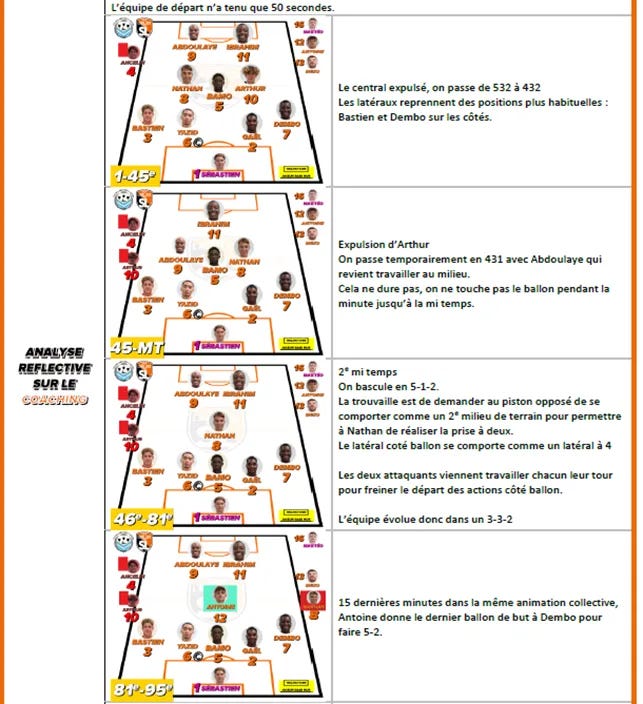
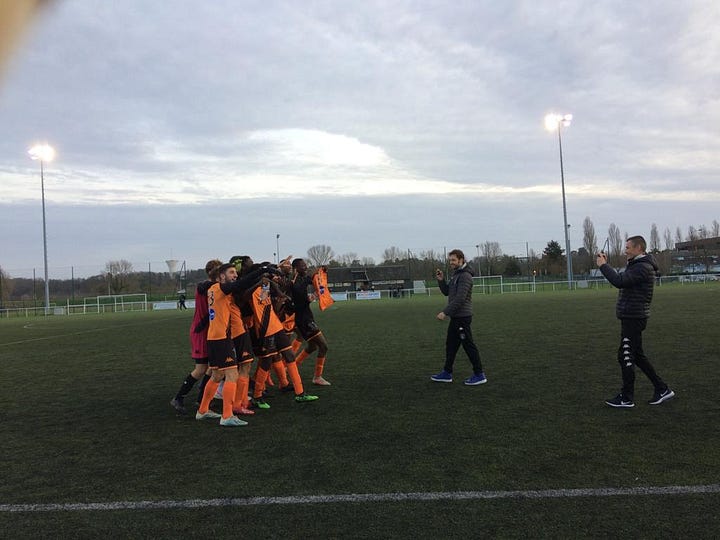
Bamo impressed and got then promoted in the B team, then trained for the first team. Bamo turned professional in 2021 with FC Lorient, and plays for Ivory Coast U23 at International level and Olympique de Marseille – as central defender as of 2025
One way to look at it (if I was dumb) was “dammit, I platformed a player in a different position and now he’s going places” and the solution the U19s needed in midfield ; moves on up.
Bamo couldn’t get a game in tier 3 in 2020-21 as the team narrowly avoided relegation to tier 4 with the biggest budget in tier 3. (trained with them, though).
Left the club for peanuts, then played 45 games in Ligue 1 for Lorient, OM and Montpellier since.
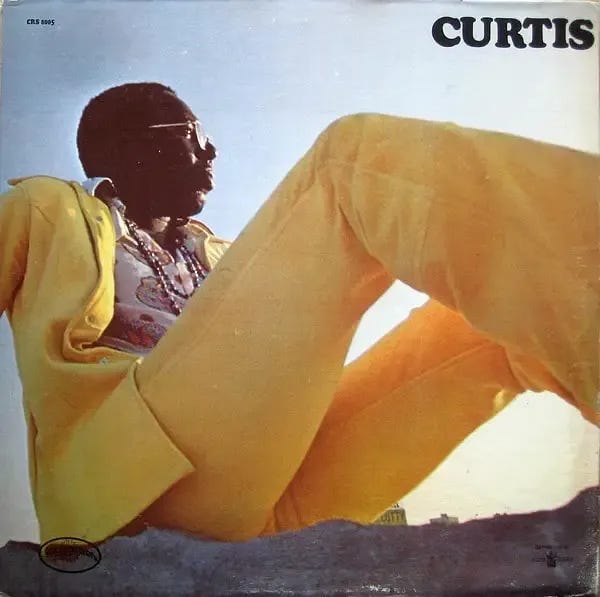
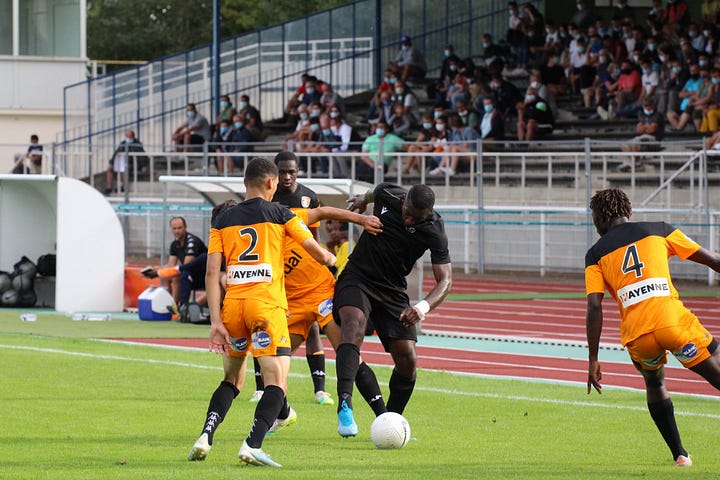
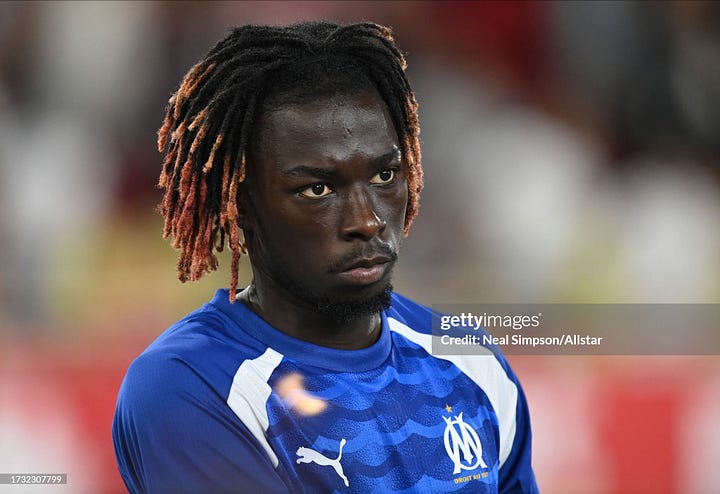
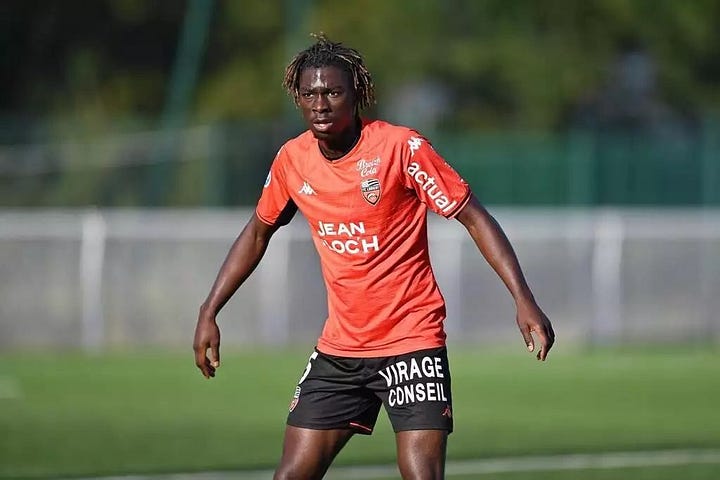
There’ll always be another player ready to step up.
On talent pools:
Ford et al in a large survey of talent identification and development processes in youth academies of professional soccer clubs from around the world, notes that the average number of players age 17-21 is 66, that the player turnover from season to season is 29% with “competition from other clubs cited as a limitation to Talent Identification”. (Ford P, 2020).
Woolcock looked at “talent tracking” by harnessing geographical information systems and identify regions that are over-under producing sport talent in the Australian Football League. He concludes that clear spatial patterns emerge in talent yeld at national and metropolitan scale, inviting at further research to explore factors for the spatial patterns. (Woolcock G, 2013)
Coté looked at “talent hotbeds” and underlined “an over-representation of birthplaces biais toward smaller cities, with professional athletes being over-represented in cities of less than 500.000” (Cote J, 2006). It’s fundamentally important to provide access to elite structures to players who show ability in locations where access to sport is more difficult, acknowledge and design a pathway to fast-track their integration. The feeling of the “last chance saloon” and the determination to not give up, sometimes allows these sportsmen to trump players “worn out” to an extent by 10 years of competitive training.
TL;DR
One in three out of the 60+ Academy players players change clubs between 17-21
Not every region produces the same talent (duh)
Professional athletes being over-represented in cities of less than 500.000 inhabitants
Reflecting on coaching practice
The ability to reflect on and learn from performance has been identified as a crucial element associated with successful progression within professional football (Harwood, 2008) as Harwood mentions as part of a “5C” programme:
Commitment, communication, concentration, control, and confidence.
Harwood designed a grid of 3 positive behaviours related to each “C”, asking both coaches and players
- How they felt sessions were creating that environment
- How players felt about their and the team’s buy-in
These behaviours would then be translated into directives aimed at shaping the right positive climate:
Figure 9: Harwood's table of Behaviours in training sessions, related to his "five C"
Figure 10: Harwood's table of coaching behaviours directives for shaping a positive psychological climate
Reflecting on the purpose, use and impact of video feedback
Pain and Harwood wrote in that “coaches have reported using video for a broad range of purposes, including tactical work, prematch psychological preparation, team building, and a tool for reflection and debriefing” (Pain M, 2007) . It is generally assumed that video feedback is an integral part of performance analysis in 2024.
However, Stratton, Reilly, Williams and Richardson’s research suggest that “the delivery of VFB may not be as straightforward or as simple as sometimes assumed” (Stratton, 2004)
Groom has modelized the delivery of video based performance analysis, putting emphasis on the desired aims and outcome: (Groom R, 2011)
Figure 11: Overview of concepts, subcategories, and categories pertaining to the targeted out comeof video-based performance analysis by England youth soccer coaches by Groom (2011)
Psychological responses to Video Feedback
Middlemas has identified six psychological responses that influenced video feedback (VFB) delivery: self-confidence, thoughts, emotions, mental toughness, and visualisation/imagery. (Middlemas S, 2018)
Self confidence is seen as “an indicator of how players respond to VFB” for coaches. Middlemas mentions that “coaches felt that self-reflection—either coach guided or unguided—could help players to move beyond emotional responses and reflect more objectively on their performance” (Middlemas S, 2018)
In a quote from a player interviewed, Middlemas cites VFB as “helps me feel like a better player, I sort of believe in my ability to do these things more when I see them” (P2).”
The aim would be to develop a tool to “avoid [building] negative thoughts patterns”.
Middlemas mentions that “visualization (the use of mental imagery) was seen as a psychological technique that was linked to VFB” and ultimately contributing to “translating coach feedback into action”
Delivery of video feedback
Middlemas also points out that “private meetings with players improved the level of trust and shared understanding between player and coach and led to a better relationship between them” , as opposed to team meetings that hold a stronger “motivation tool prior to performance”. “
Buy-in by the whole team is key to maximise effectiveness” of team VFB. But on an individual level, the detail of feedback and build up of self confidence aligns with the stakes of individual VFB. (Middlemas S, 2018)
Delivery climate
There’s got to be a climate of positive perception for coaches to deliver their didactics at team level. Middlemas suggest “the idea of sport science practitioner taking a more active role in the development of a positive learning environment”, notably sport psychologists for the delivery of the message.
The video feedback exercise is a challenge in order to align training methodologies, empowering players in their pathway towards a first team. Players are also willing to do their own self-evaluation; albeit acknowledge that coaches can provide elements of context they did miss out on with their empirical knowledge of the game.
TL;DR
Video feedback is an exercice whithin itself, just like you don’t improvise a training session on the go.
Collective video feedback holds a motivational / group component
Individual video feedback in the right climate is a catalyst for player development
Ullrich
Scaling up regional football to national football:
Niort in January 26, 2020 for his debut at National U19 level, as U17.
Niort folded by the way since, that’s a certainty. Was it a U19 game?
Base midfielder in 532
Ullrich started the game at Niort, but was struggling inside half an hour. The decision to start him was swiftly followed by the decision to take him off to avoid a first half sending off
Screening the defence vs Le Mans
February 9, 2020 - local derby under atrocious wind conditions, 11am kick off (to allow the U17s to play at 3pm).
Pasta at 8h - first time gets some using.
Improvement was needed, to stay switched on, stay dynamic, evidenced by the same type of sequence two weeks later
Screening the defence consistently as U17 for his second U19 game.
Win and clean sheet for #8 and his team
And a mention in the local newspaper:
I praised his role in the engine room (“in the shadows”)
Figure 17: Another requisite to handle with inevitable direct play and end to end at U19 National level (hectic)
Tactical "tidbit" from 532 (us in Orange) vs 433. If the deep midfielder receives, I’d want the defensive midielder (UP in white) to close down and the other ones to squeeze and tuck in. Unless drilled, that won’t necessarily come to mind immediately.
In possession tidbit to find separation, hide behind the CB then this very specific “S” run to provide a slightly negative angle to the fullback so that the pass isn’t received square
Training sessions circa February 20 about zonal defending and passing marking duties : striker runs across towards the backline.
Implementing zonal defensive concepts in the game, for the first away clean sheet victory in 31 games and 3 years for the club
One of the coaching points I put the most emphasis on: defensive midfielder shuffling across to anticipate for turnovers and fill in the space. On this one, the player is guided in real time: made aware of the space he has to fill
in the subsequent sequence, UP doesn't need my intervention to identify the space and finds himself able to provide support and receive the pass
Empowering players against high level competition
Against Champions to be Angers in March 2020,
UP played with a U17 team mate (a centre forward) as a defensive pairing.
Keeping the striker back to goal
Footwork “side on” backtracking diagonally to see both goals and the crosser and come nearer to the first post
Changing direction with a strong block on the right leg to go left, and intercept
Backtracking diagonally to head backwards
Also,

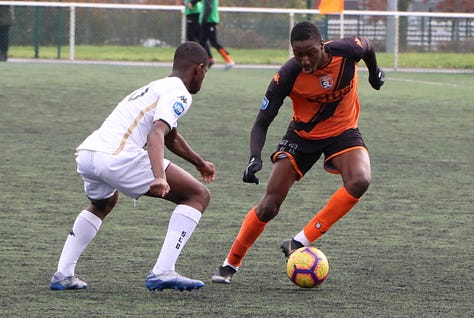

that was his first game in France after signing for Angers from Everton (word is that they signed him after a one day trial).
One of the most dynamic players I’ve coached against
Ullrich and his team mate Karamba shut down the best attack in the group, having to find solutions to overcome the matchups.
One towering target man, and the most explosive winger I’ve seen at this level (and now professional at OGC Nice in Ligue 1) who was making his debut as U16 that day.
The press report from Ouest France (which is read by 2.1 million people a day) more than the Daily Mail)
was fairly positive:
“Young Lavallois confirmed their solidity at home. Their good second half and faultless defensive set up, deserved sharing the points”
Empowering players to enhance technical execution and solutioning
Figure 25: I knew UP had a nice masked pass post recovery, and thought he’d do a steady job patrolling the back four
However this specific pass as a CB after a carry took me aback. This is a professional level line breaking “needle pass” to connect with the fullback cutting inside in an unconventional area to receive.
This is the kind of impact I had to expect from Ullrich without asking : knock people off the ball, play the pre-assist
Ullrich has since joined US Saint Malo who’ll try to finish in front of Girondins de Bordeaux.
Ullrich got international recognition with Guiana at the end of the calendar year 2023
Guiana (not Guyana) are in the particular limbo to play FIFA competitions but still being an administrative region of France.
Who’s the most famous player from French Guiana?
FA Cup, Premier League, Champions League winner and World Cup 2006 Finalist Florent Malouda.
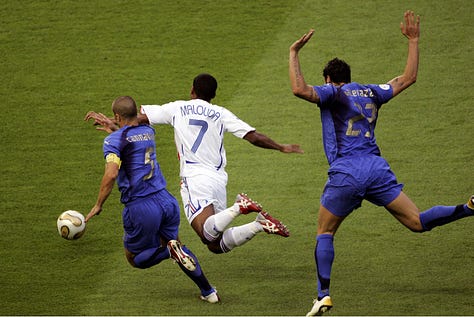


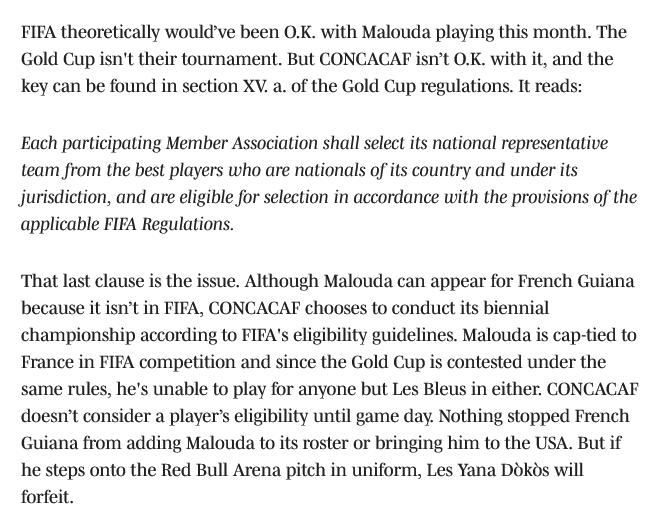
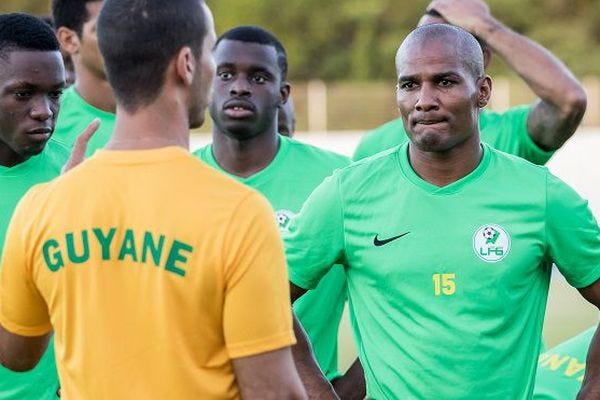
Yeah Malouda played for them in the Gold Cup and got his team lose 3-0 because CONCACAF say you can’t play for two countries even if FIFA said it was fine.
Oh well, keep politics out of football

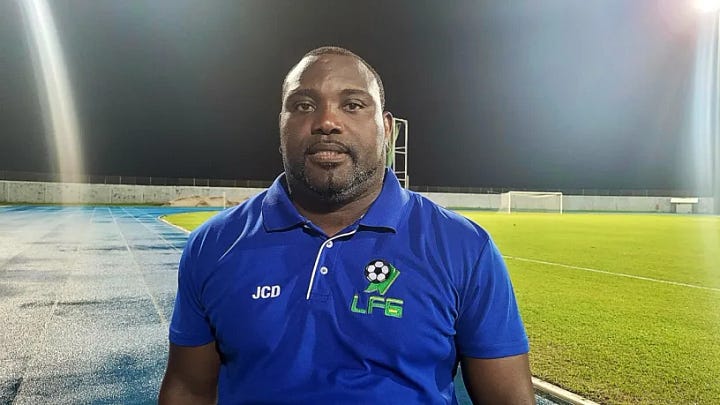
Ullrich (3) got called up for Guiana by Jean-Claude Darcheville (ex Glasgow Rangers)
Played gour games in the CONCACAF Nation League
I don’t even wish to claim any credit there, because the inner fuel of his success belongs to him.
That separation movement
Go opposite side
Hide behind the striker
Show up on the defender’s first touch
Receive on back foot, open
Was the topic of entire video feedback sessions to refine it - he kind of always had that back foot reception, then it was about making sure it’d occur more often.
Winger and fullbacks are out of position
UP created a supporting angle to receive
Screening the defence:
Get on toes



Side on, one foot in front, one foot behind
Jockeying on the right to adjust in real time
So he can reach out and cut off the pass without doing the splits
Line breaking pass
Close down, spring and decelerate
Side on to force wide ; pushing off the right leg
Handing out marking responsibilities
Telling the defender to pick the run in order to stay in position
Screening the channel to anticipate turnover
Who’s right in place to handle the inevitable pass in that dead zone?
References
Araujo D, S. P. (2016). Training of Team Decisional Behavior in Football From an Ecological Dynamics Approach. Research quarterly for exercise and sport.
Bergkamp T, e. a. (2019). Methodological Issues in Soccer Talent Identification Research. Sports Medicine, 49, 1317-1335.
Correia V. (2019). Principles of nonlinear pedagogy in sport practice. Physical education and sport pedagogy. 24(2), 117-132.
Cote J, M. D. (2006). When “where” is more important than “when”: birthplace and birthdate effects on the achievement of sporting expertise. Journal of Sport Science, 1065-1073.
Coutinho D. (n.d.). The effects of an enrichment training program for youth football attackers. PloS one, 13(6).
Ford P, B. J. (2020). A survey of talent identification and development processes in the youth academies of professional soccer clubs from around the world. Journal of Sport Sciences, 38(11-12), 1269-1278.
Groom R, C. C. (2011). The Delivery of Video-Based Performance Analysis by EnglandYouth Soccer Coaches: Towards a Grounded Theory. Journal of Applied Psychology, 16-32.
Harwood, C. (2008). The Sport Psychologist. Human Kinetics, 22, 109-133.
Kelly A, F. L. (2023). Relative Age Effect: Looking back and Moving Forward. In Routledge (Ed.), lent Identification and Development in Youth Soccer: A Guide for Researchers and Practitioners (1st ed.). (p. 144).
Lillard A. (2012). Preschool children's development in classic Montessori, supplemented Montessori, and conventional programs. Journal of school psychology,, 379-401.
Middlemas S, H. S. (2018). No Place to Hide: Football Players’ and Coaches’ Perceptions of the Psychological Factors Influencing Video Feedback. Journal of Applied Sport Psychology, 30(1), 23-24.
Pain M, H. C. (2007). The performance environment of the England youth soccer teams. Journal of Sports Sciences, 25(12).
Santos S. (2018). Differential Learning as a Key Training Approach to Improve Creative and Tactical Behavior in Soccer. Research quarterly for exercise and sport, 11-24.
Stanley Eitzen D, S. D. (1975, March). The segregation of blacks by playing position in football: accident or design? Social Science Quarterly, 55(4), 958-959.
Stratton, R. W. (2004). Science of Youth Soccer. London: Routledge.
Woolcock G, B. M. (2013). Measuring Spatial Variations in Sports Talent Development: the approach, methods and measures of 'Talent Tracker'. Australian geographer, 44(1), 23-39.










